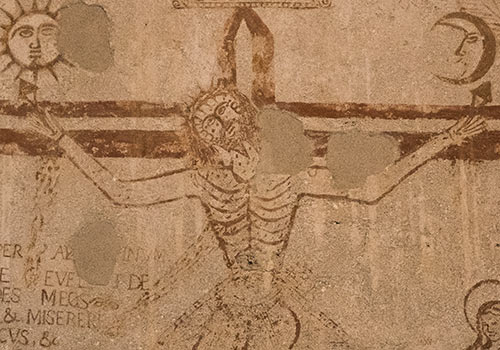Palermo
Palermo - the capital of the autonomous region of Sicily and the Province of Palermo.
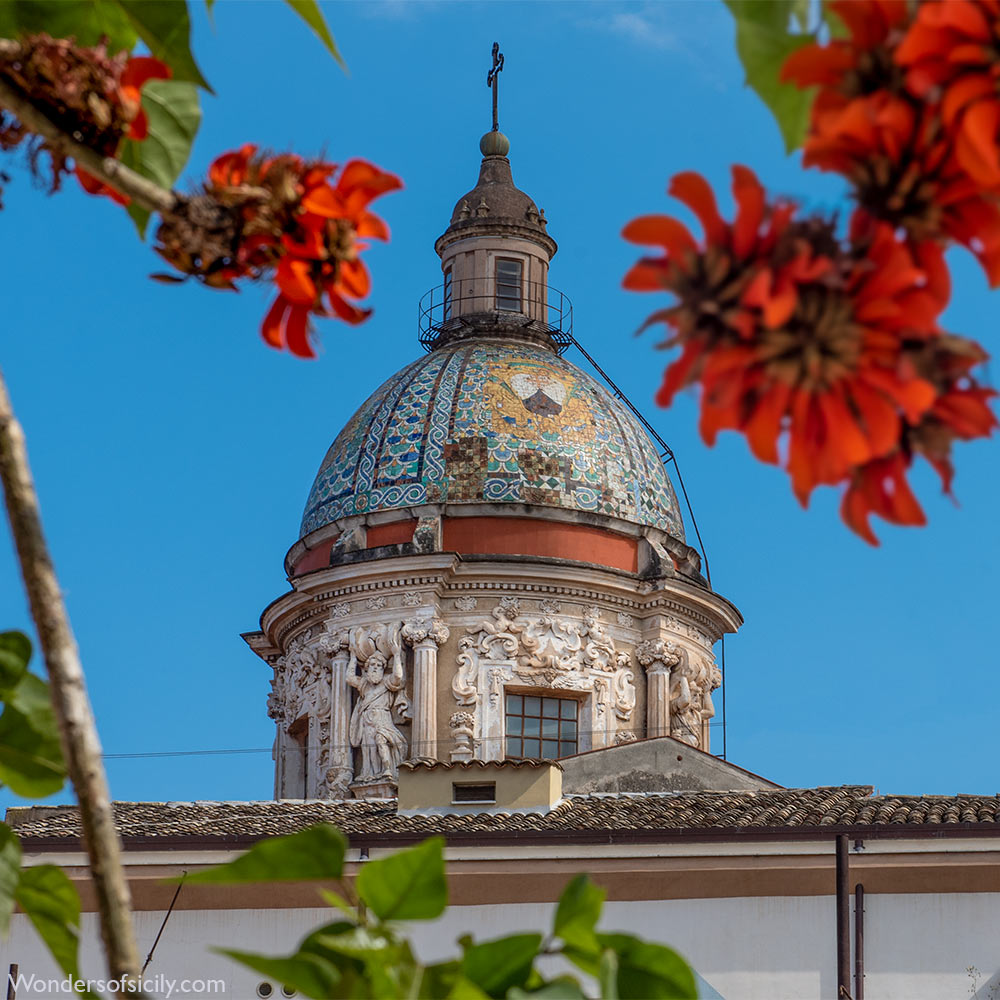
The dome of the church of the Carmine (Chiesa del Carmine Maggiore) in the Ballarò market district with polychrome majolica tiles av spectacular stucco reliefs.
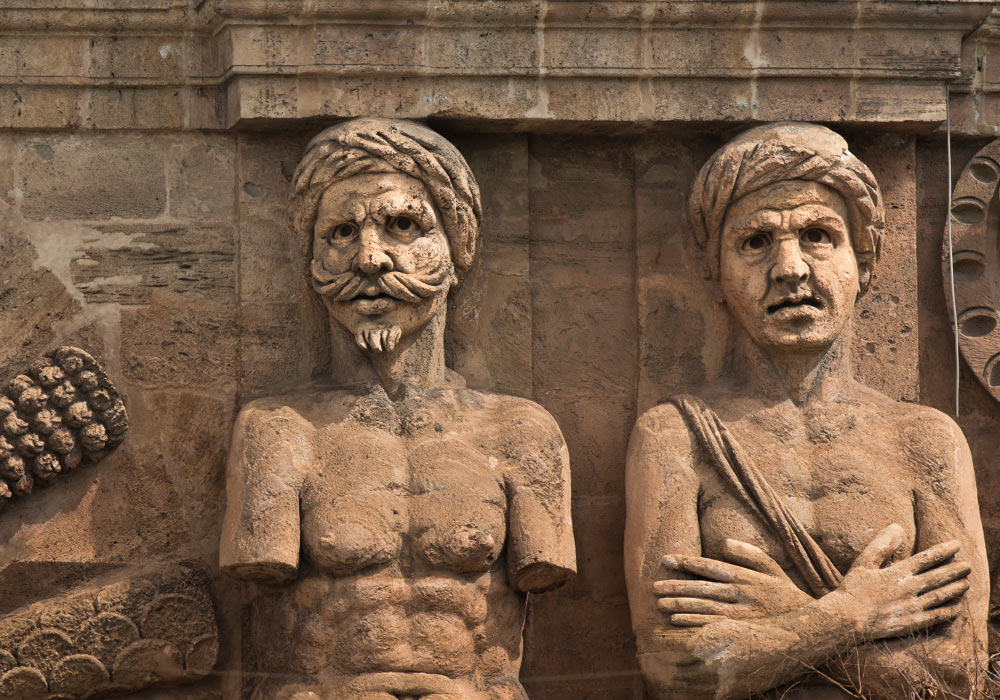
Detail of Porta Nuova, near the Norman Palace in Palermo. The telamons with their hands chopped off, represent Saracens defetead by the emperor Charles V.
UNESCO’s World Heritage List
Arab-Norman Palermo and the Cathedral Churches of Cefalú and Monreale (Italy) - new on the list (2015)
Located on the northern coast of Sicily, Arab-Norman Palermo includes a series of nine civil and religious structures dating from the era of the Norman kingdom of Sicily (1130-1194): two palaces, three churches, a cathedral, a bridge, as well as the cathedrals of Cefalú and Monreale. Collectively, they are an example of a social-cultural syncretism between Western, Islamic and Byzantine cultures on the island which gave rise to new concepts of space, structure and decoration. They also bear testimony to the fruitful coexistence of people of different origins and religions (Muslim, Byzantine, Latin, Jewish, Lombard and French).
Palermo
- Palazzo dei Normanni (The Norman Palace)
- Cappella Palatina (The Palatine Chapel in the Norman Palace)
- Church of San Giovanni degli Eremiti
- Church of Santa Maria dell'Ammiraglio (also known as the Martorana)
- Church of San Cataldo
- Cathedral of Palermo
- The Zisa Palace (La Zisa)
- The Cuba Palace (La Cuba)
Norman Cathedrals
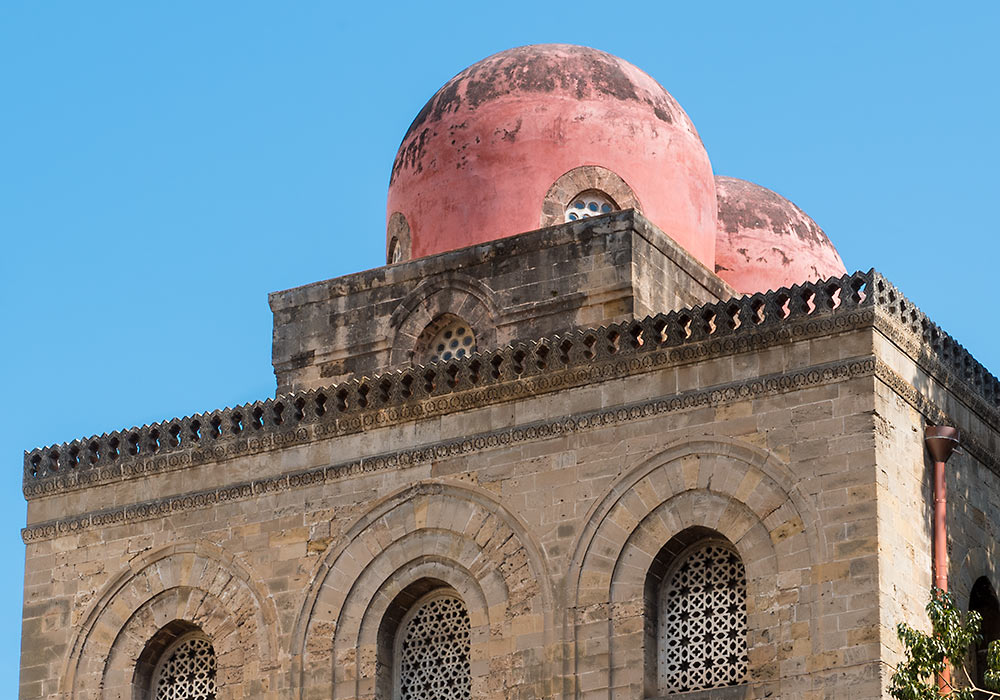
The Church of San Cataldo (Chiesa di San Cataldo) in Palermo, an example of the wonderful Arabian-Norman architecture. San Cataldo is one of the sites in Palermo inscribed on the UNESCO World Heritage List. San Cataldo was founded by William I's chancellor, Maio of Bari c. 1160. In that year, Maio was assassinated with the result that San Cataldo's interior never was decorated. After 1787 the church served as a post office (!), before it was restored in 1885.
The different Names of Palermo
Zis (Carthaginians)
Panormos (the Greeks)
Panormus (the Romans)
Bal’harm (the Arabs)
Palermo
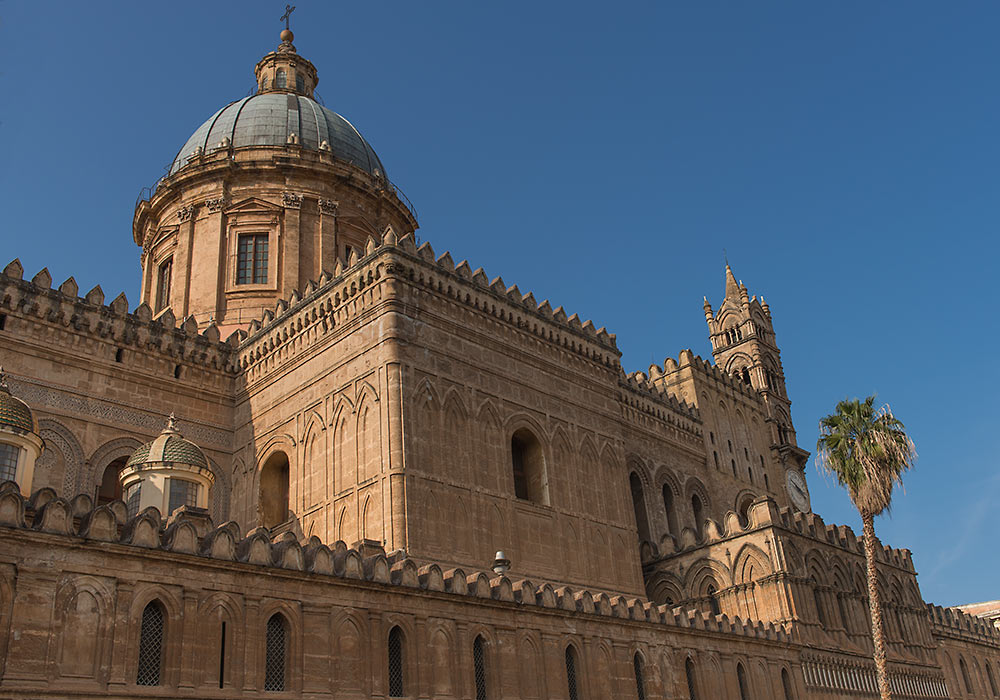
Palermo Cathedral is characterized by different architectural styles, due to a long history of additions, alterations and restorations. It was erected in 1185 by Walter Ophamil (Walter of the Mill), the Anglo-Norman archbishop of Palermo and King William II's minister.
Palermo links
- From mafia city to a haven for refugees: Palermo moves on from its criminal past Mayor of Sicilian capital insists it is a place of tolerance (The Guardian: Stephanie Kirchgaessner reports from Palermo)
The "Serpotta Oratories"
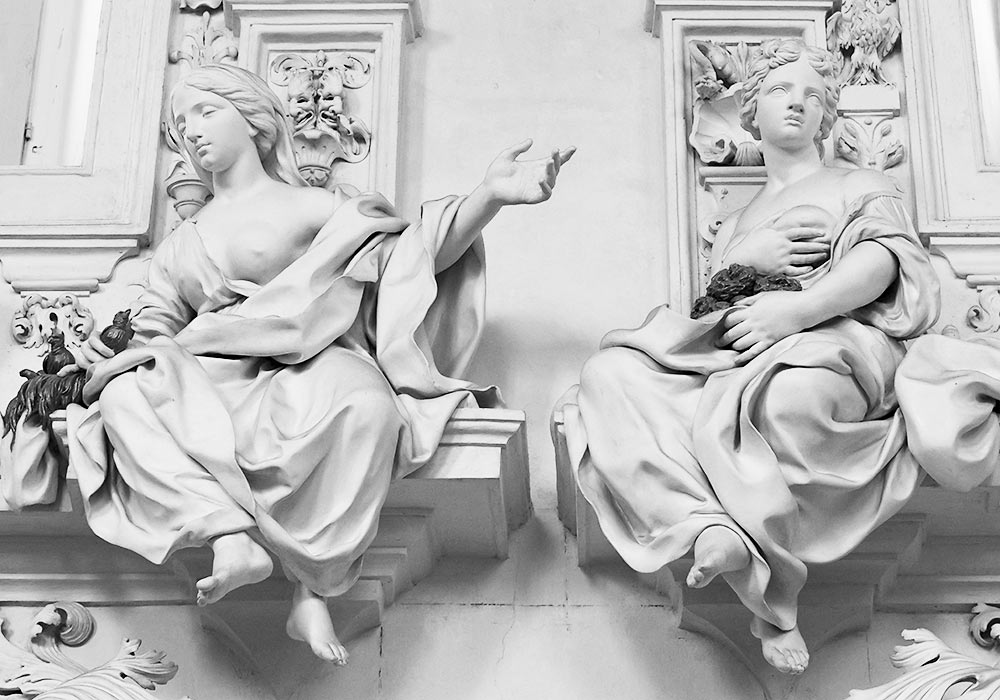
Giacomo Serpotta stucco statues in Oratorio di Santa Cita, Palermo.
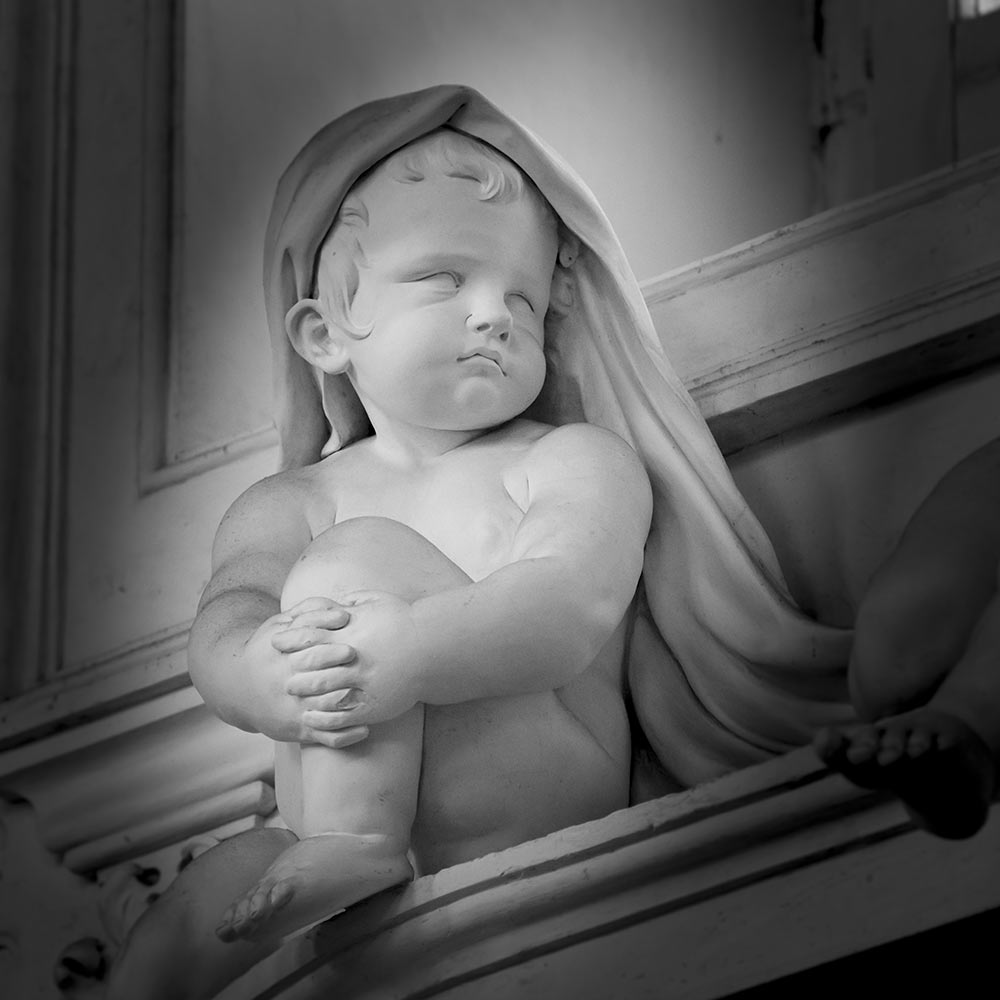
Serpotta putto in Oratorio del Rosario di Santa Cita, Palermo.
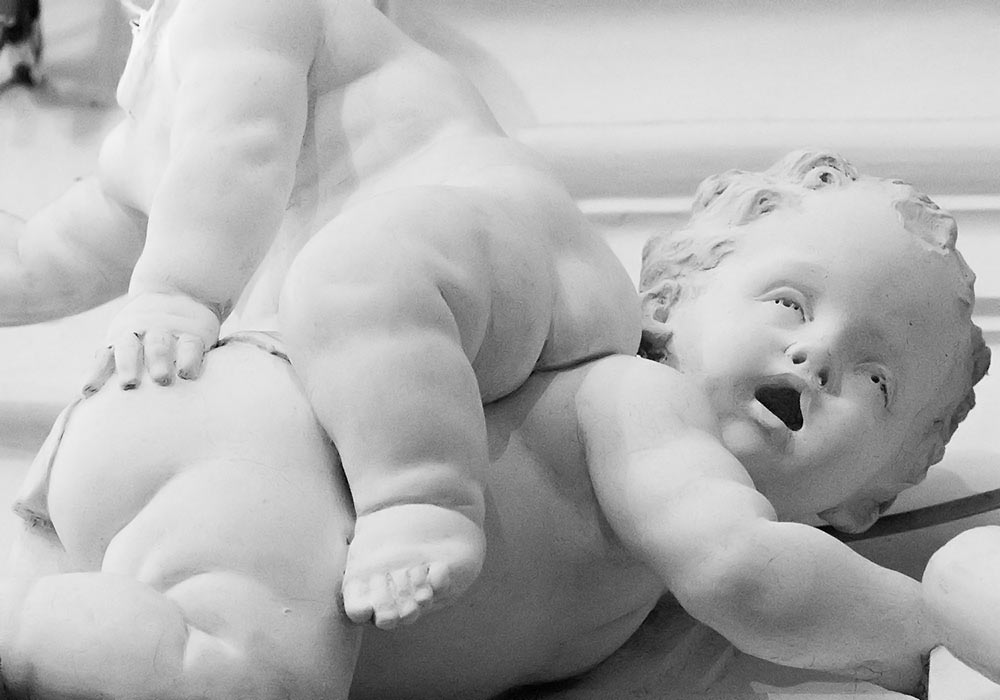
Stucco putti by Giacomo Serpotta (1656-1732) in Oratorio del SS. Rosario di San Domenico, Palermo.
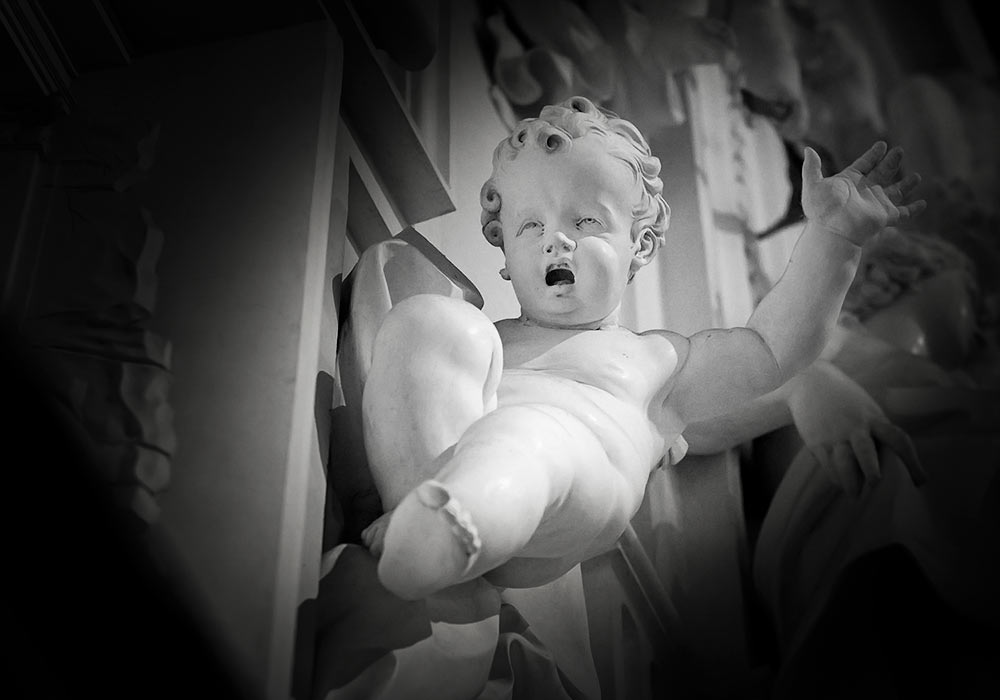
Stucco by Giacomo Serpotta in the Oratorio di San Lorenzo, Palermo.
La Martorana (Santa Maria dell'Ammiraglio)
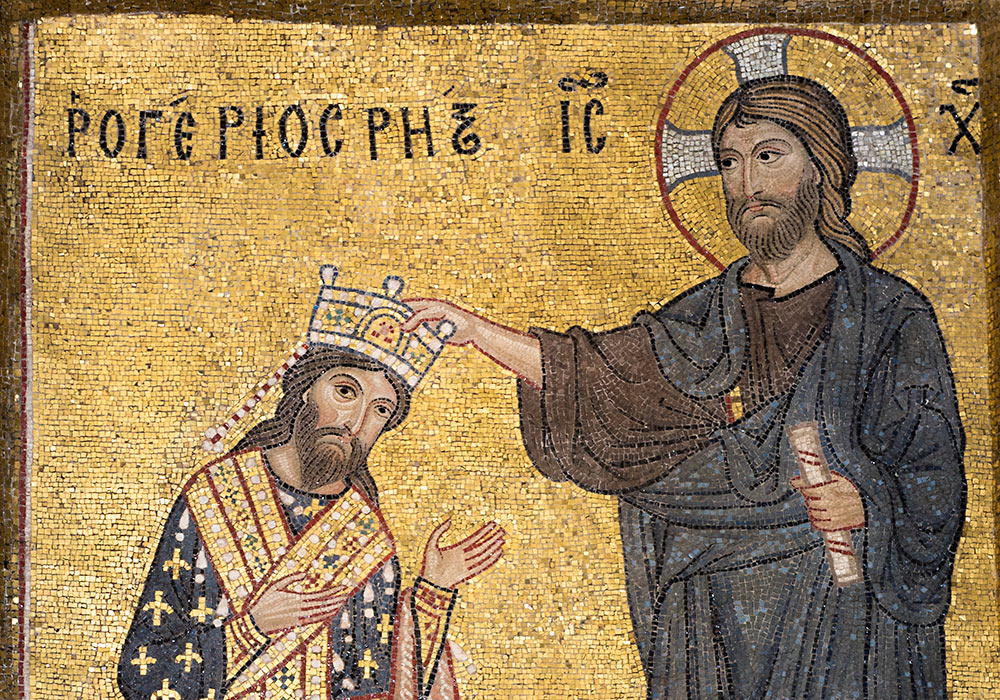
Roger II receiving the crown directly from Christ and not the Pope. Mosaic in the Martorana, Palermo. The mosaic carries an inscription "Rogerios Rex" in Greek letters. After the Sicilian Vespers of 1282 the island's nobility gathered in the church for a meeting that resulted in the Sicilian crown being offered to Peter III of Aragon.
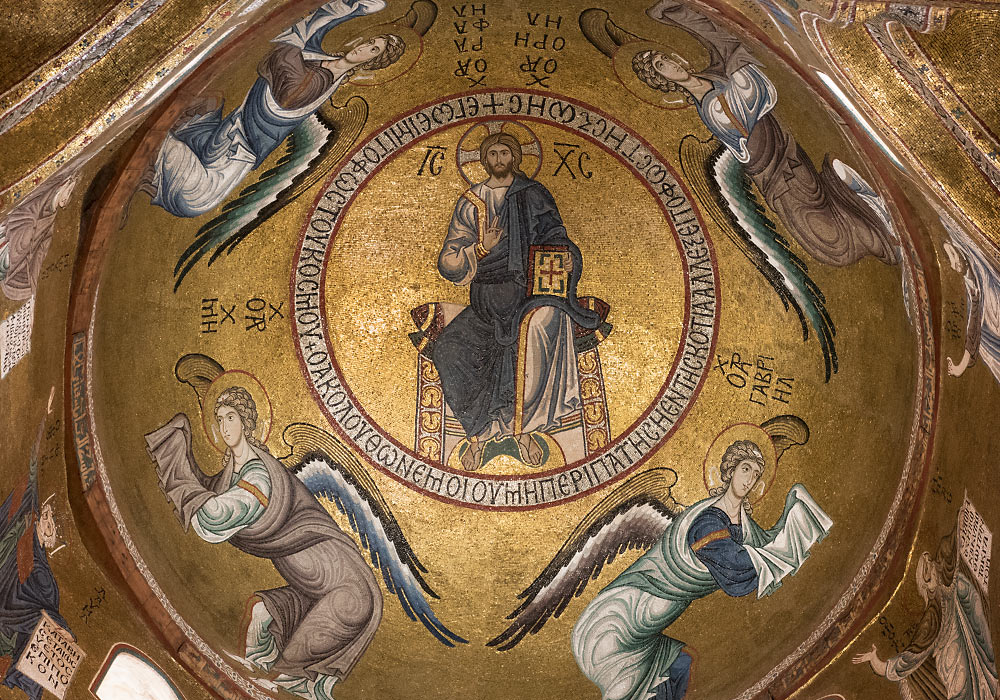
Christ Pantocrator in Martorana (Santa Maria dell'Ammiraglio), Palermo. The 12th century mosaics were executed by Byzantine craftsmen.
Church of SS Salvatore
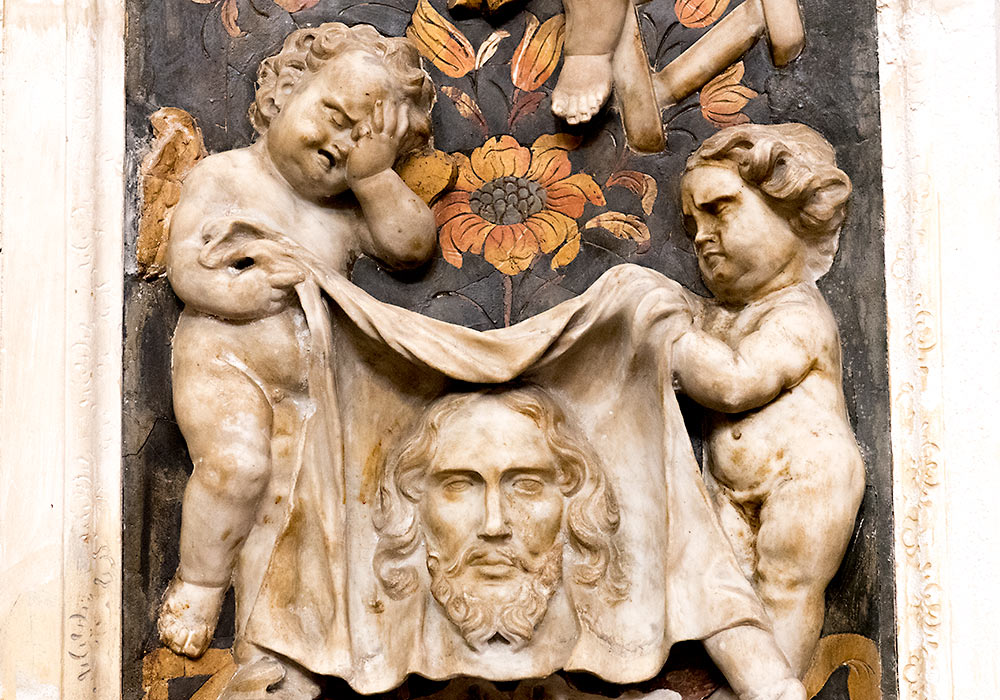
Putti mourning the death of Christ in the Church of SS Salvatore, Palermo.
Quattro Canti
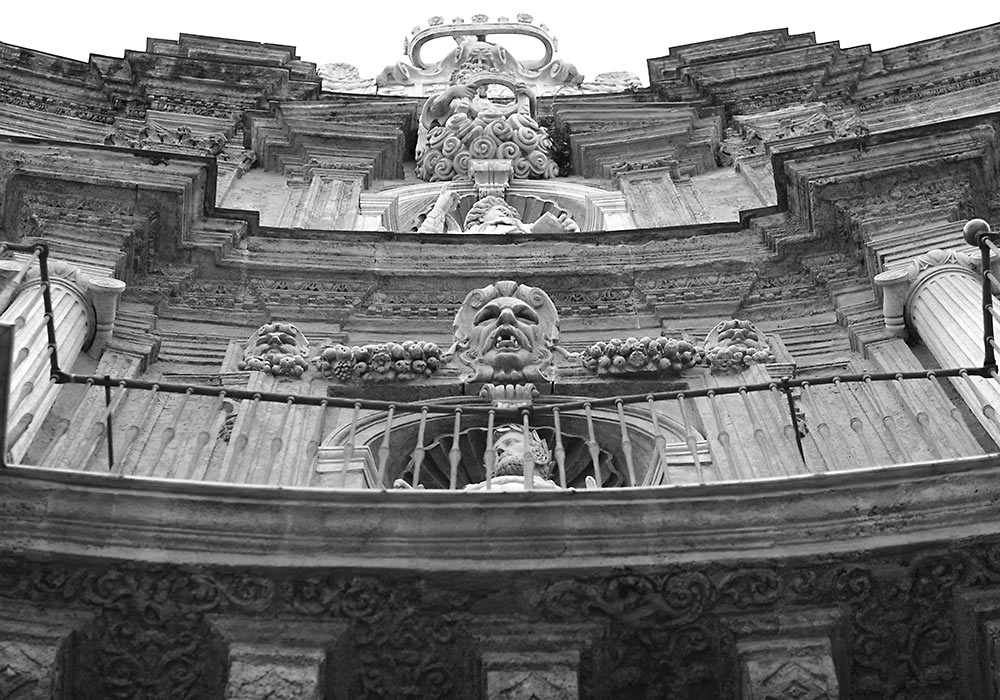
The baroque square Quattro Canti at the crossing of the two principal streets in Palermo, the Via Maqueda and the Corso Vittorio Emanuele.
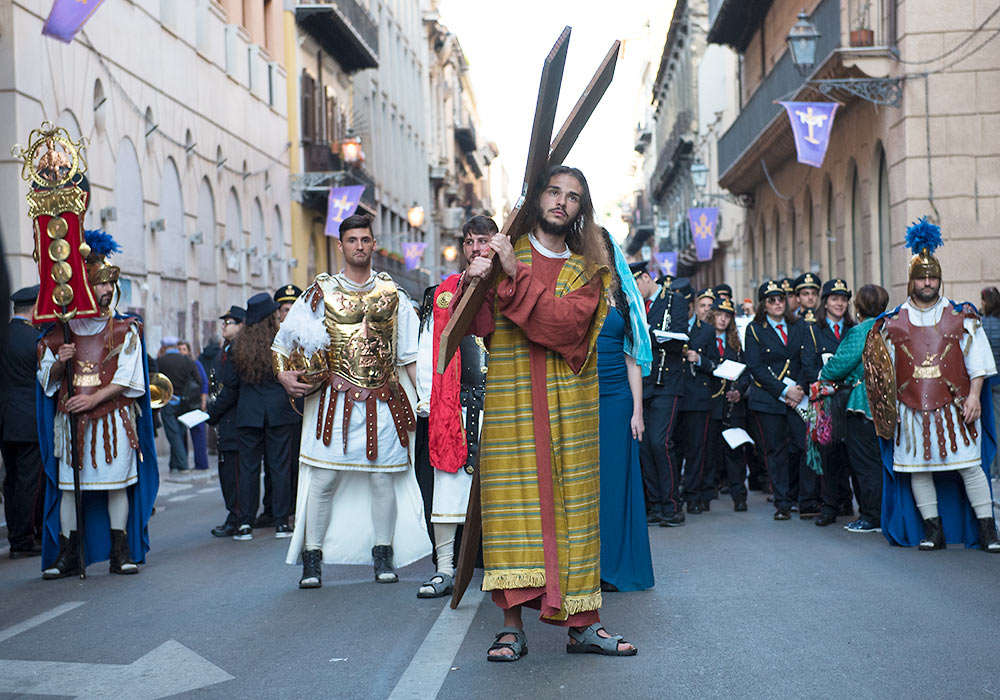
Reenacting Jesus Christ's journey to Golgotha on Good Friday. Quattro Canti, Palermo.
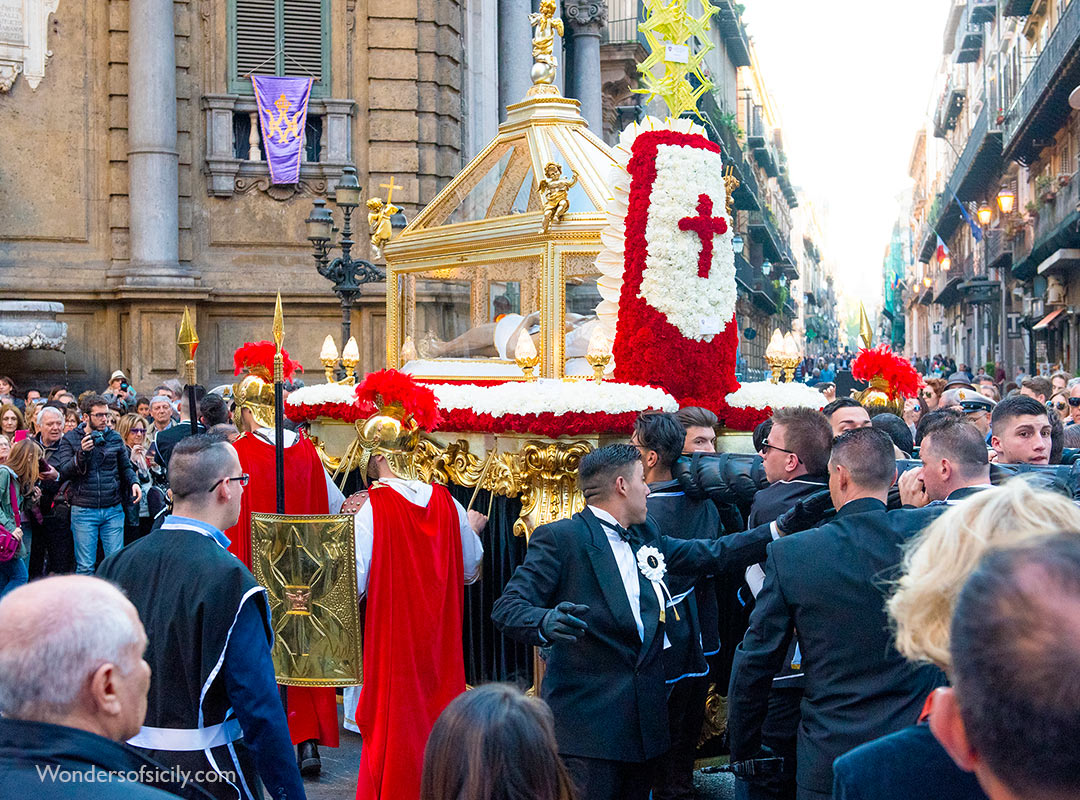
Easter procession on Good Friday.
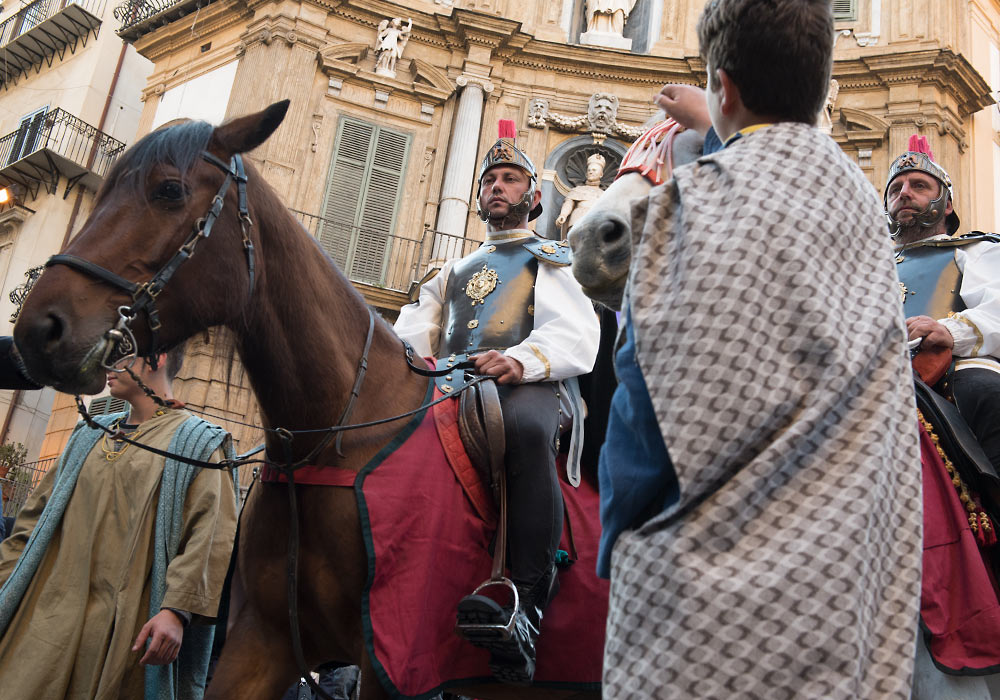
Good Friday procession passing Quattro Canti.
Fontana Pretoria (1554-55) - the Fountain of Shame
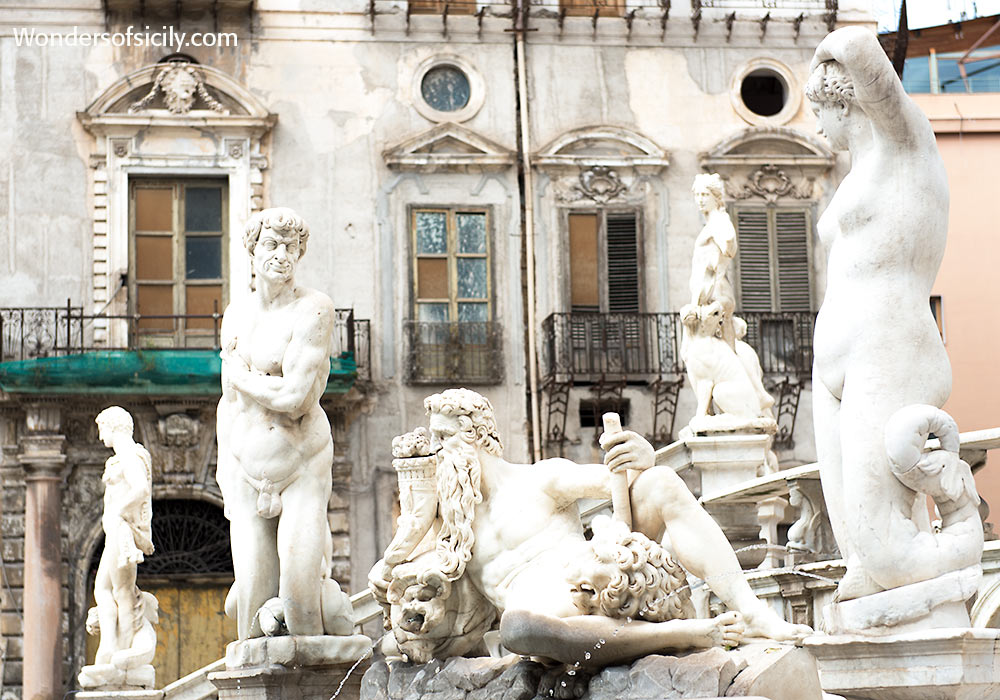
Fontana Pretoria (1554-55), also known as the Fountain of Shame on Piazza Pretoria near the Quattro Canti intersection in Palermo. Goethe was appalled when he visited Palermo in 1787.
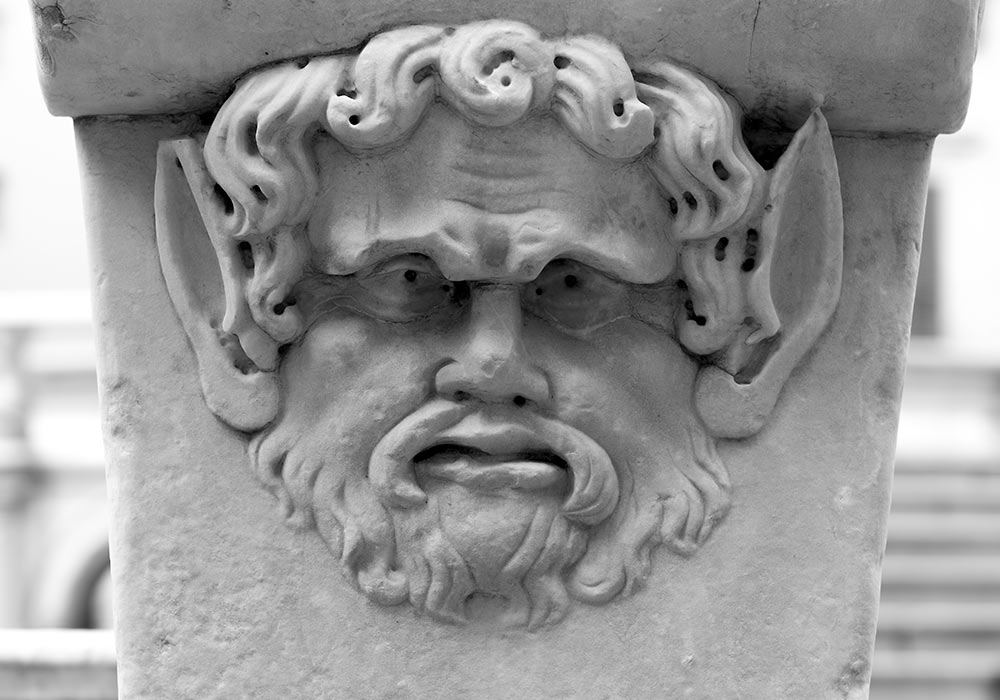
Detail of a statue at Fontana Pretoria in Palermo.
The Norman Palace
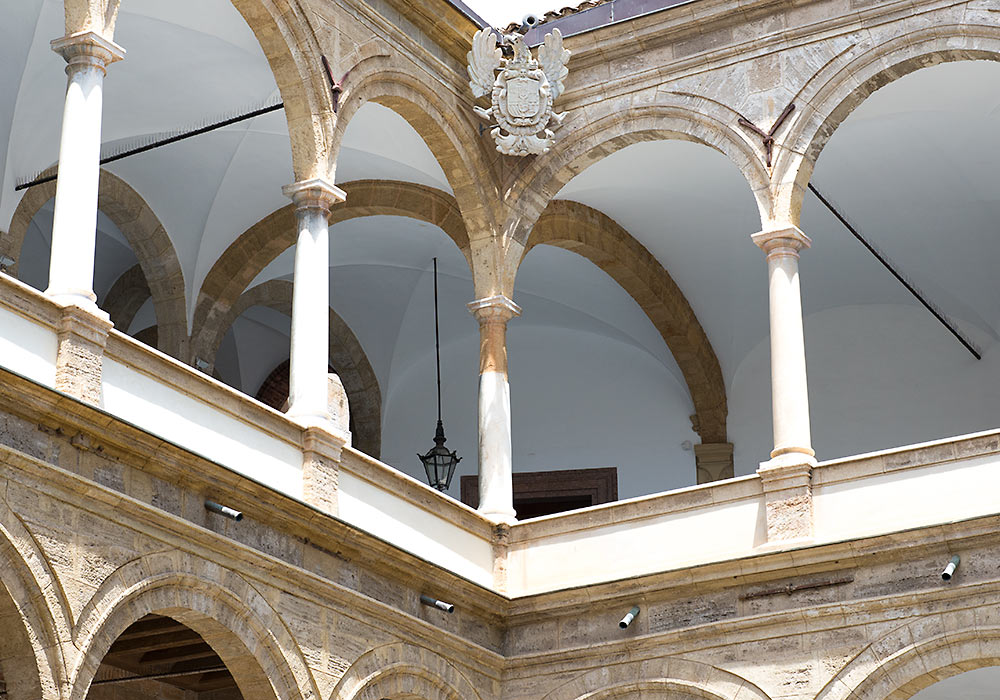
Detail of the Norman Palace in Palermo.
Palatine Chapel (Cappella Palatina) in the Norman Palace
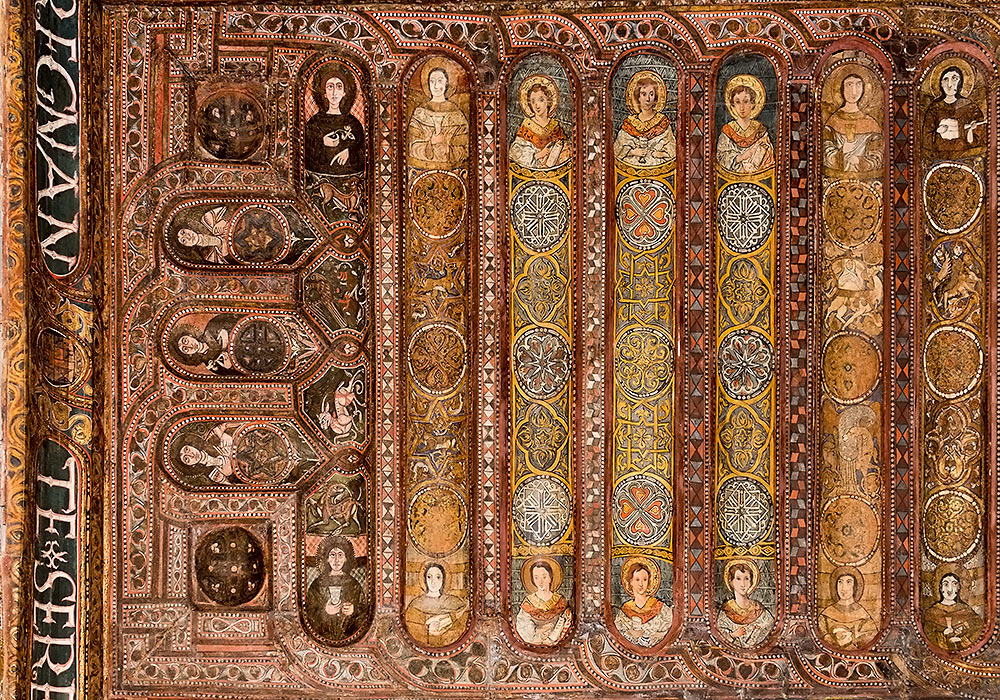
The magnificent wooden ceiling of the Palatine Chapel (Cappella Palatina) in the Norman Palace in Palermo. Nave, north side.
See more photos of the Palatine Chapel (Cappella Palatina) here!
The Church of the Gesù (Casa Professa)
The Church of the Gesù (aka Chiesa del Gesù) aka Church of Saint Mary of Gesu (aka Chiesa di Santa Maria di Gesù) aka Casa Professa is one of the most important Baroque churches in Sicily.
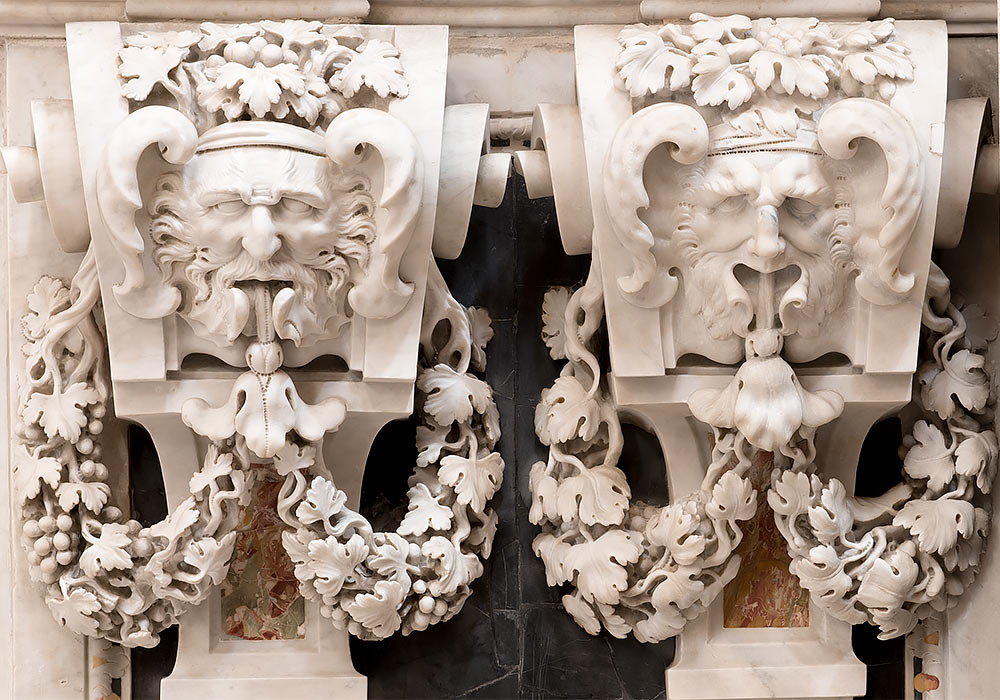
The marble reliefs with their figural and ornamental motifs in the Church of the Gesù (Chiesa del Gesù) are unique.
Video: Palermo anno 1910
More photos from Palermo
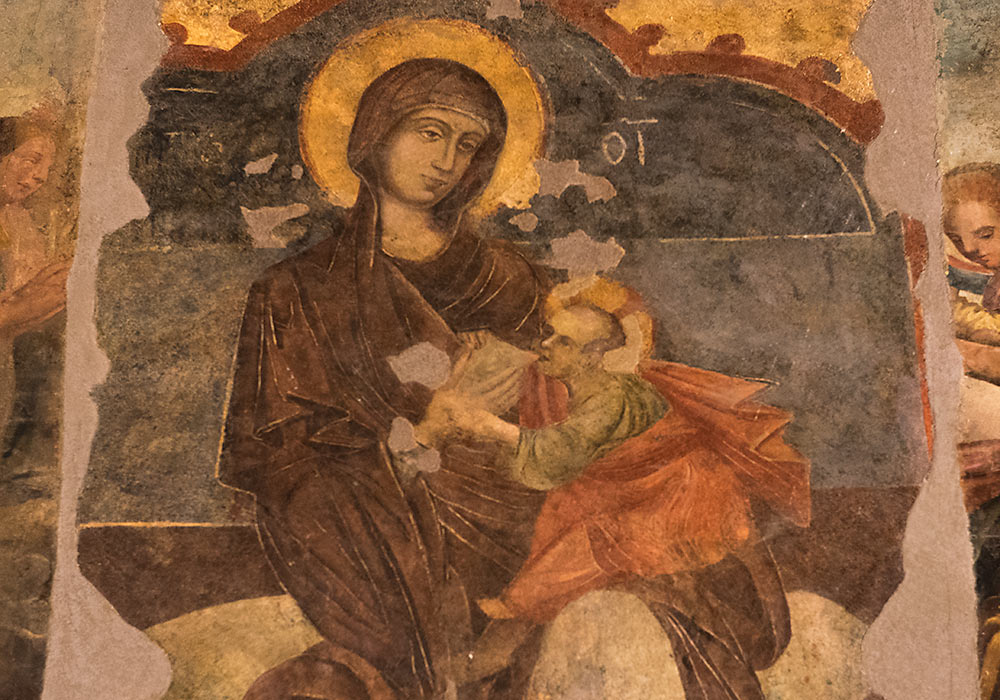
An interesting fresco of Mary with the child Jesus at her breast is found in Chiesa Santa Maria della Catena (Church of Saint Mary of the Chain), close to Porta Felice. Jesus is depicted as an adult and Mary's breast is exposed. The painting was later censored and painted over. It has now been restored, but you can see the new painting to the left and the right of Maria and Jesus.
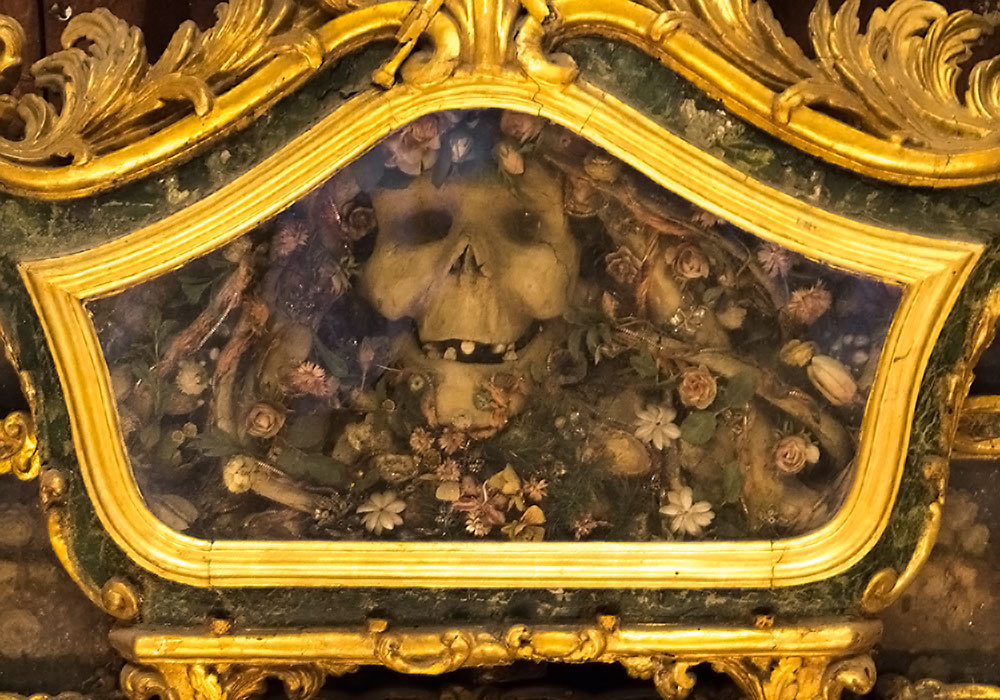
Detail of an reliquary altarpiece in Chiesa di Sant'Orsola, Palermo.
Santo Spirito
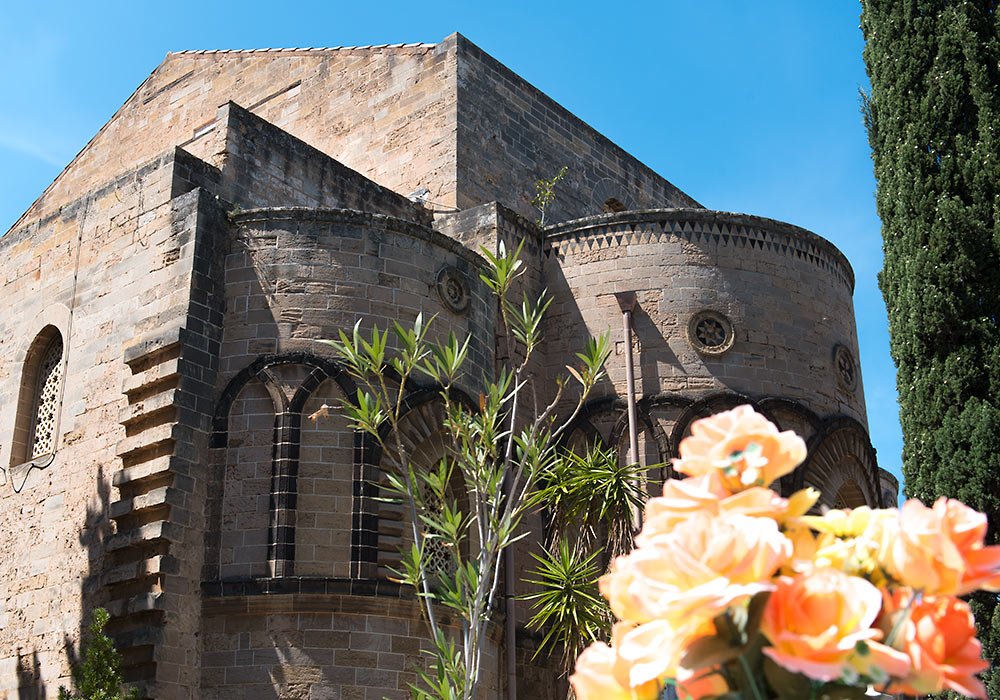
The Norman church Santo Spirito.
Grand Hotel Et Des Palmes
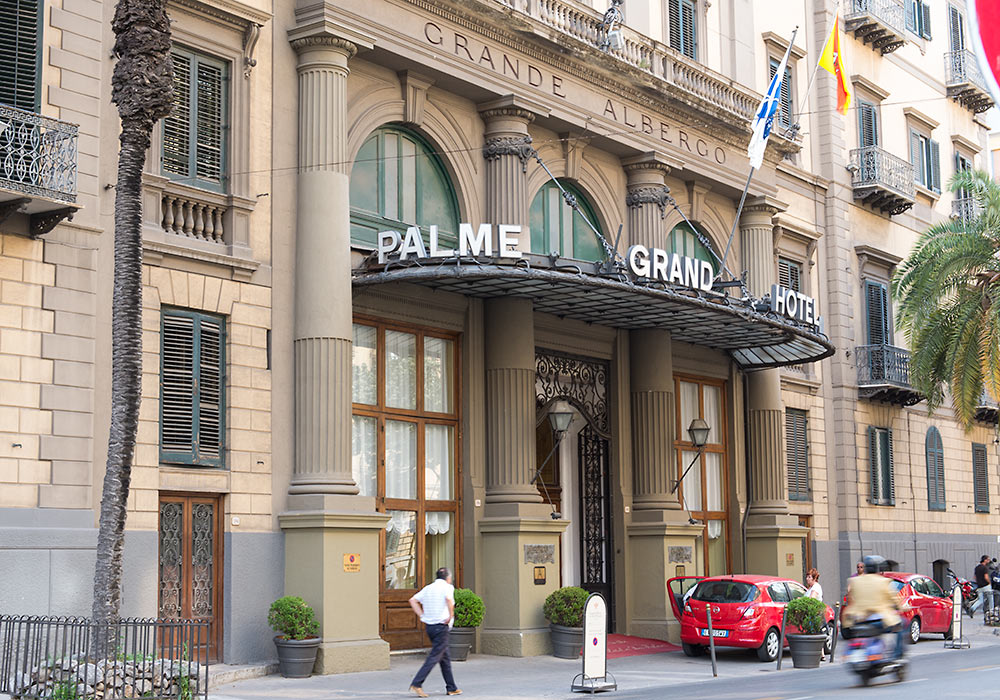
Richard Wagner went to Sicily to finish his last opera Parsifal. Wagner and his family arrived at Hôtel des Palmes (now: Grand Hotel Et Des Palmes), on 5 November 1881.
Teatro Massimo
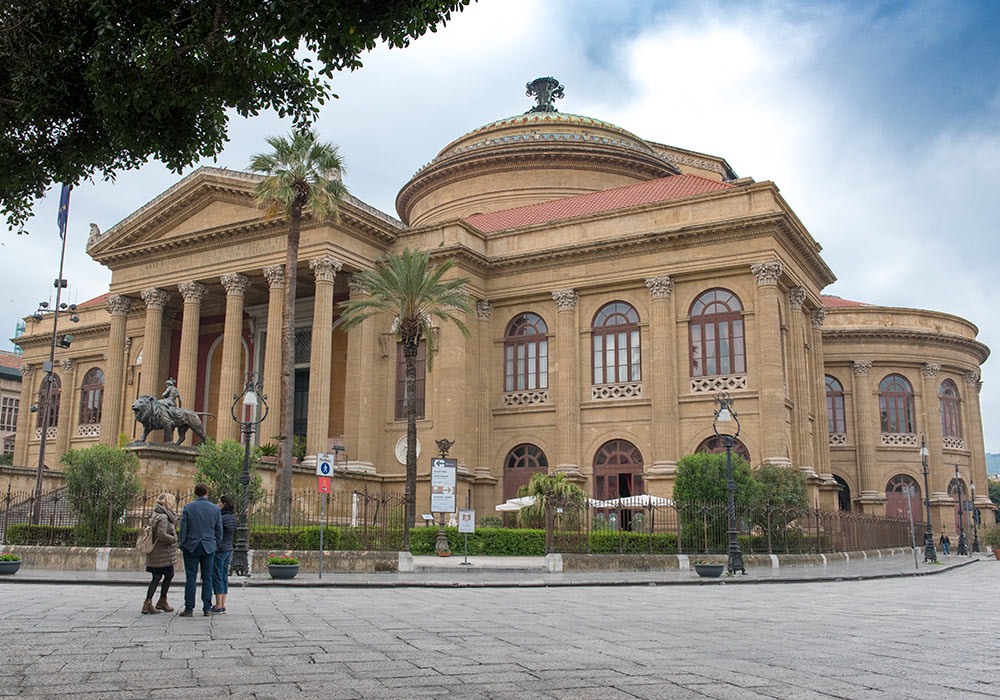
Teatro Massimo on Piazza Verdi, one of the largest opera houses in Europe, was opened in 1897.
Guy de Maupassant: “At the theater, however, the Sicilian becomes again entirely Italian, and it is very interesting for us to attend some operatic performance in Rome, Naples, or Palermo. All the impressions of the public burst forth immediately as they are felt. Nervous to excess, gifted with an ear as delicate as it is sensitive, loving music to distraction, the entire crowd becomes a sort of vibrating beast that feels but doesn’t reason. In five minutes, the same perfomer is applauded with enthusiasm and whistled with frenzy; the crowd stamps with joy or anger, and if some false note escapes from the singer’s throat, a strange cry, exasperated, overshrill issues from all mouths at the same time. When the opinions are divided, the shushes and applause mix together. Nothing passes unnoticed in the attentive and quivering house, which shows its feeling at every moment, and which from time to time, seized by a sudden anger, begins to roar like a menagerie of ferocious animals.”
Guy
de Maupassant: Sicily. Italica Press. Kindle Edition.
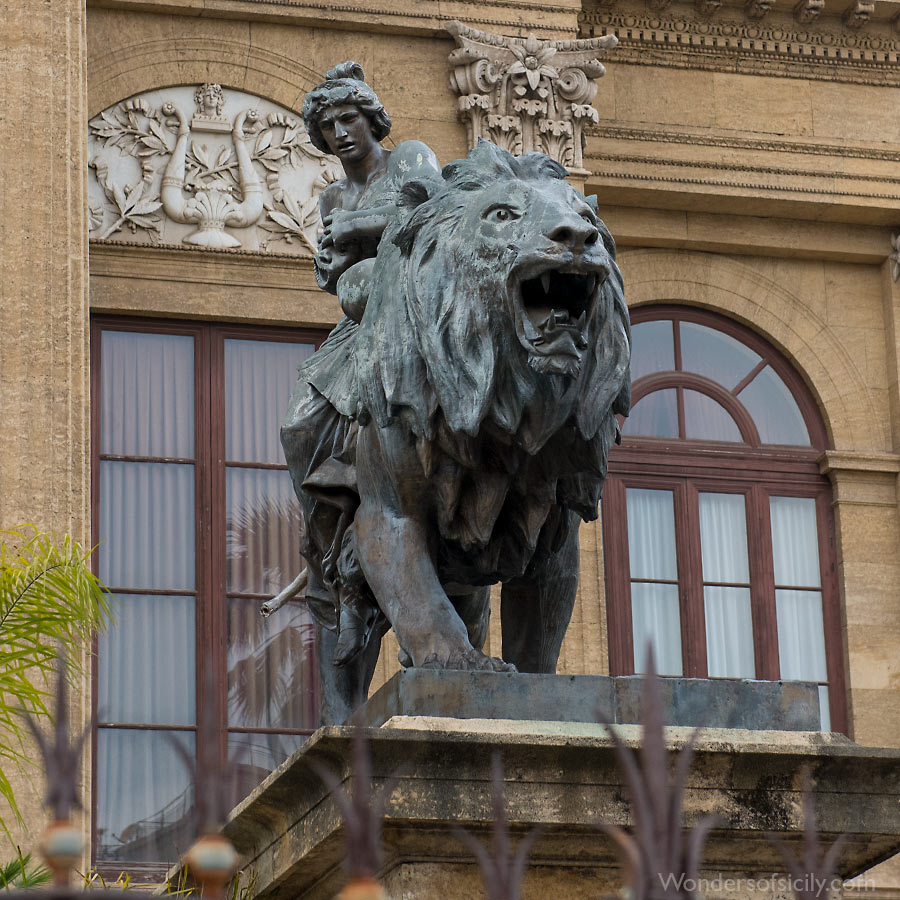
One of the two bronze statues of lions next to the monumental stairway entrance. The statues were created by Mario Rutelli and Benedetto Civiletti.
Teatro Politeama Garibaldi
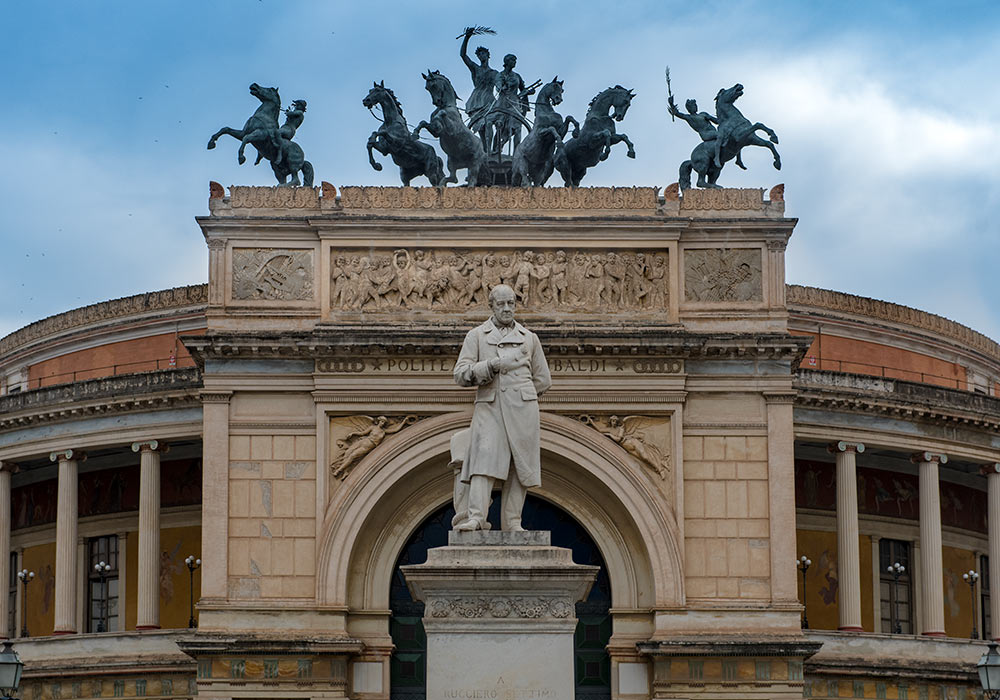
Teatro Politeama Garibaldi (1865-91) is the headquarters of the Orchestra Sinfonica Siciliana.
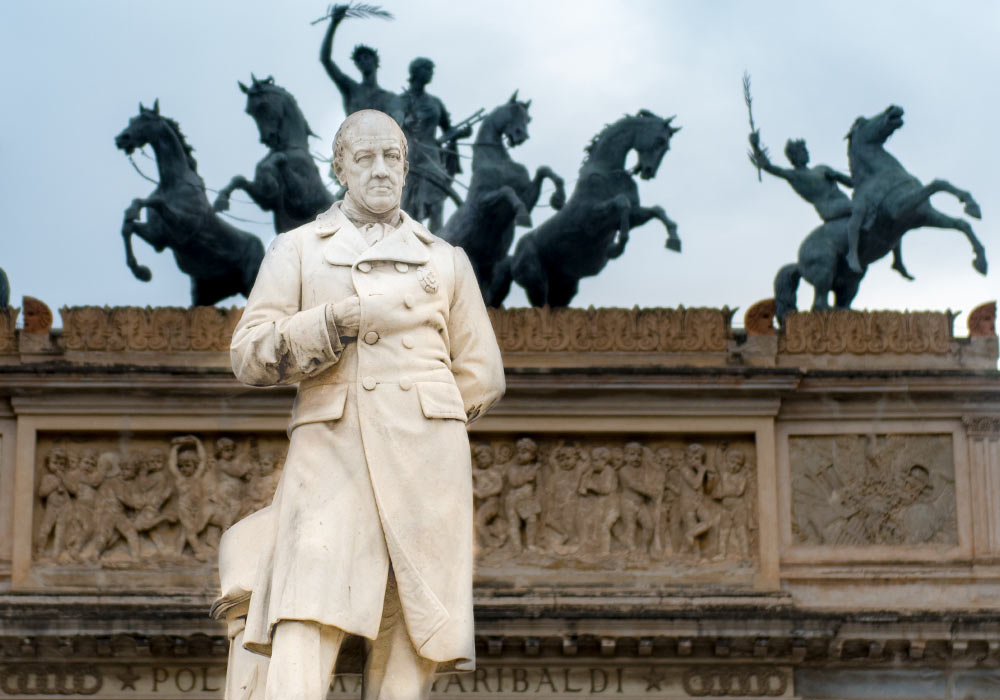
Statue of the Sicilian politician, diplomat, and patriotic activist Ruggiero Settimo (1778-1863) in front of Teatro Politeama Garibaldi, Palermo.
R. Albergo delle Povere (founded as "Reale Albergo dei Poveri")
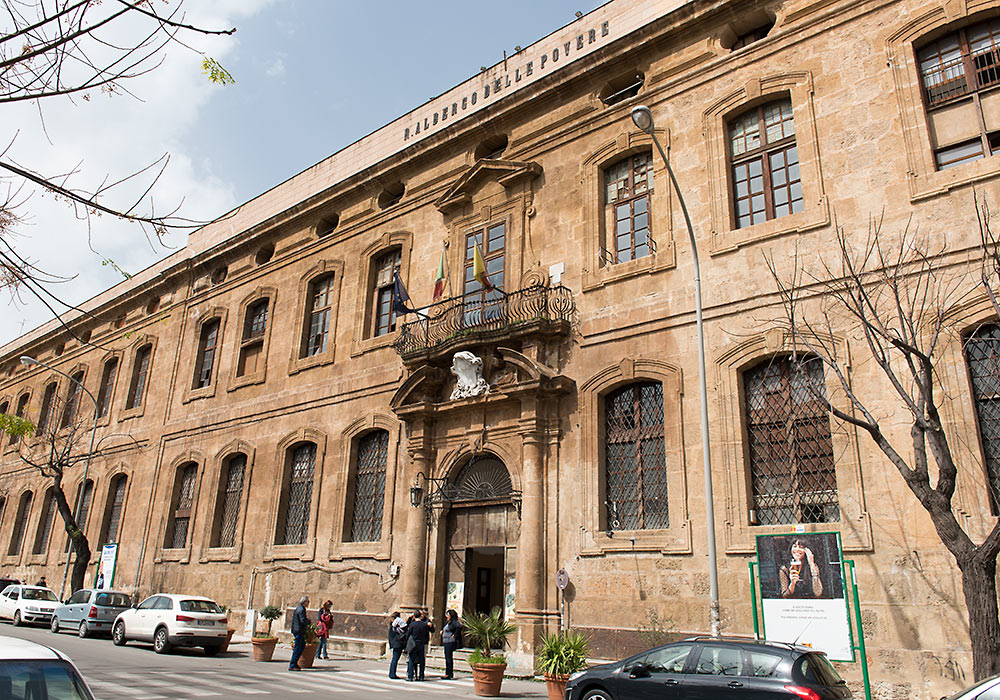
Reale Albergo dei Poveri (Royal Shelter of the Poor) is located outside the Porta Nuova on the road to Monreale. It was founded in 1733 during the Austrian Viceroyalty, with the purpose of accommodating the incapacitated poor, the crippled, young vagabonds, and orphans. One of the founders was Ferdinando Francesco Gravina, Prince of Palagonia, who is more known for building Villa Palagonia in Bagheria. The institution was initially located outside Porta Termini, a place later named Albergo Vecchio (Old Shelter). The project was resumed during the reign of Charles of Bourbon.
Initially entrusted to the architect Orazio Furetto, the construction site was later overseen until completion by architects Giuseppe Venanzio Marvuglia and Nicolò Puglia. Construction began in 1746 under the supervision of the Viceroy of Sicily, Bartolomeo Corsini (the first stone was laid on April 24, and during the construction, Phoenician and Carthaginian tombs were discovered). Giovanni Amico (1684–1754) served as an adjudicator in the competition preceding the construction of the building. “Competitions were a standard feature of architectural practice at the time, particularly for the most prestigious buildings. There is ample evidence of the competitions for the cathedrals in Syracuse, Modica and Catania, and the Albergo dei Poveri in Palermo” (Maria Giuffre: The Baroque Architecture of Sicily, p 112)
However, the works lasted much longer than expected, and the structure was only inaugurated on August 8, 1772, during the reign of Ferdinand III, albeit partially incomplete.
In 1898, it was reserved exclusively for women, and its name was changed to Albergo delle Povere (Shelter of Poor Women).
The author of a magnificent work on the Sicilian baroque, Maria Giuffrè, calls the building an “outstanding work”.
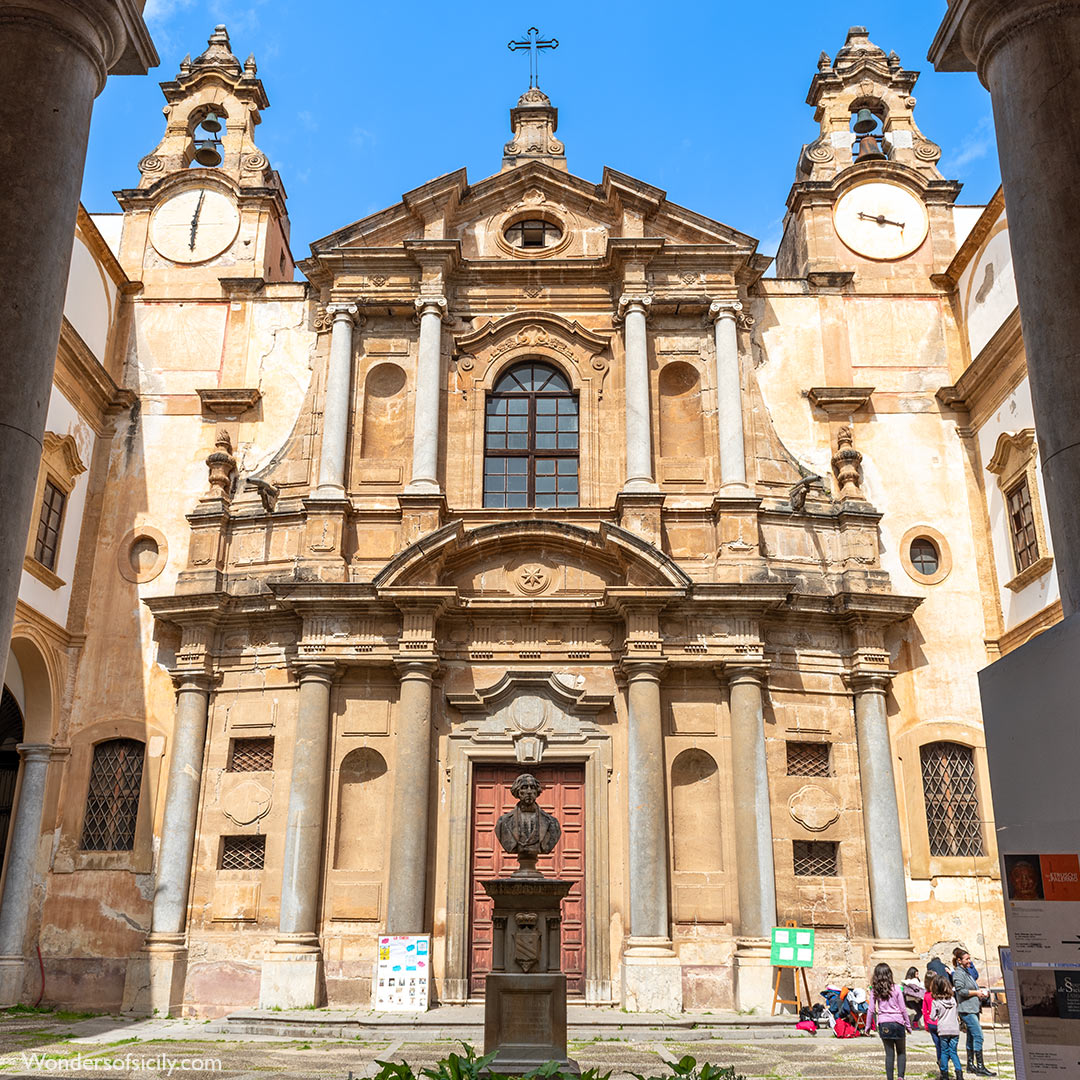
In the first courtyard of the Albergo delle Povere stands a rectangular church dedicated to Santa Maria della Purificazione (St. Mary of the Purification), built between 1773 and 1779.
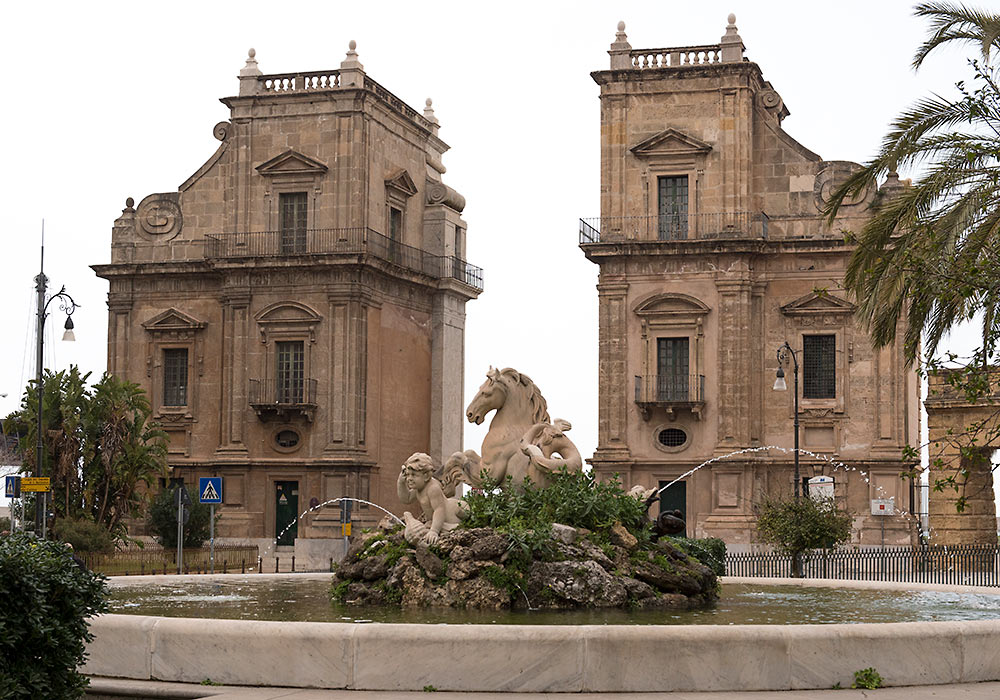
Porta Felice was built in between the 16th and 17th centuries.
Piazza Marina, Palermo
Antica Focacceria S. Francesco
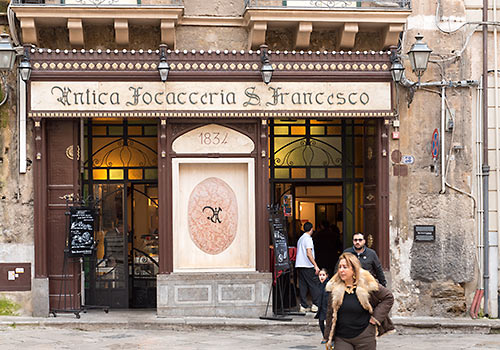
Orto botanico - The Botanical Garden in Palermo
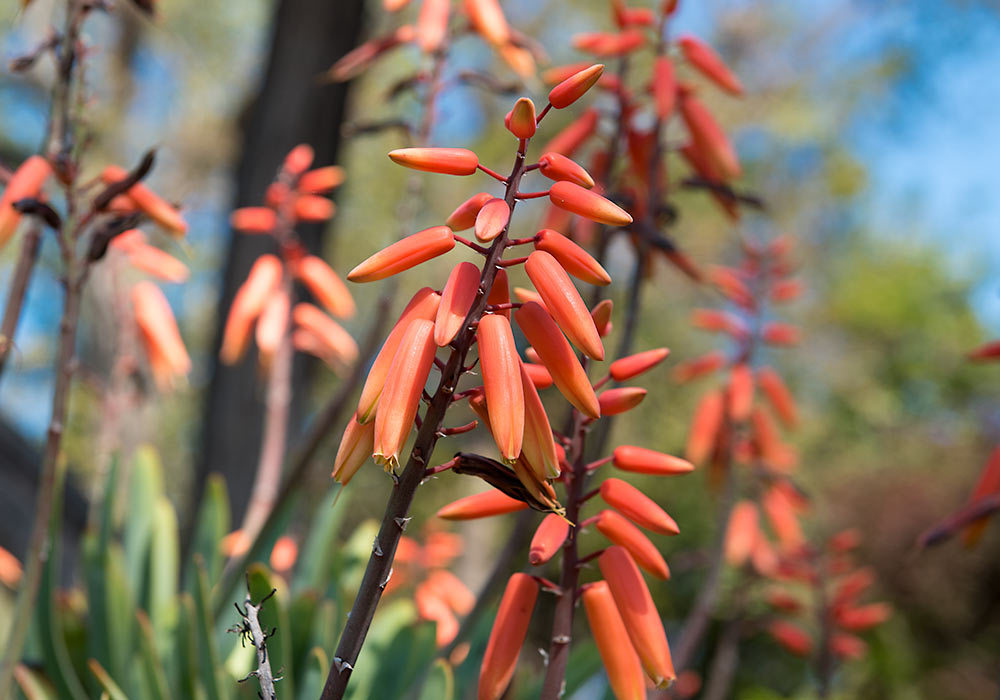
The Botanical Garden (Orto botanico) is a nice place to relax between visiting churches and museums in Palermo. The garden opened to the public in 1795. It has lots of plants and spectacular trees from all over the world. In the lovely lily pond, there are lots of cute turtles.
Facts about Sicily
- Sicily is the largest island in the Mediterranean.
- Sicily is the largest region in Italy.
- The terrain in Sicily is hilly. Plains and plateaus make up only 14% of the total land area.
- It is hard to believe for anyone having visited Sicily that the island once was well wooded. By the 17th century, there was not enough timber for local consumption. A lot of the forests disappeared during the long Roman Empire era (about 6 centuries). Sicily was the first grain supplier of the empire and the Romans deforested almost the entire island in order to enlarge the wheat crops.
- The Nobel Prize winner Luigi Pirandello was born near Agrigento.
- Boccaccio's Decameron Fifth Day - Novel VI takes place in the Cuba, Palermo (commissioned in 1180 by William II)
- Lemons, oranges, pistachio and sugar cane were brought to Sicily by the Arabs.
- Sicily’s greatest film director, Giuseppe Tornatore, was born, in Bagheria. His most famous film is Nuovo Cinema Paradiso.
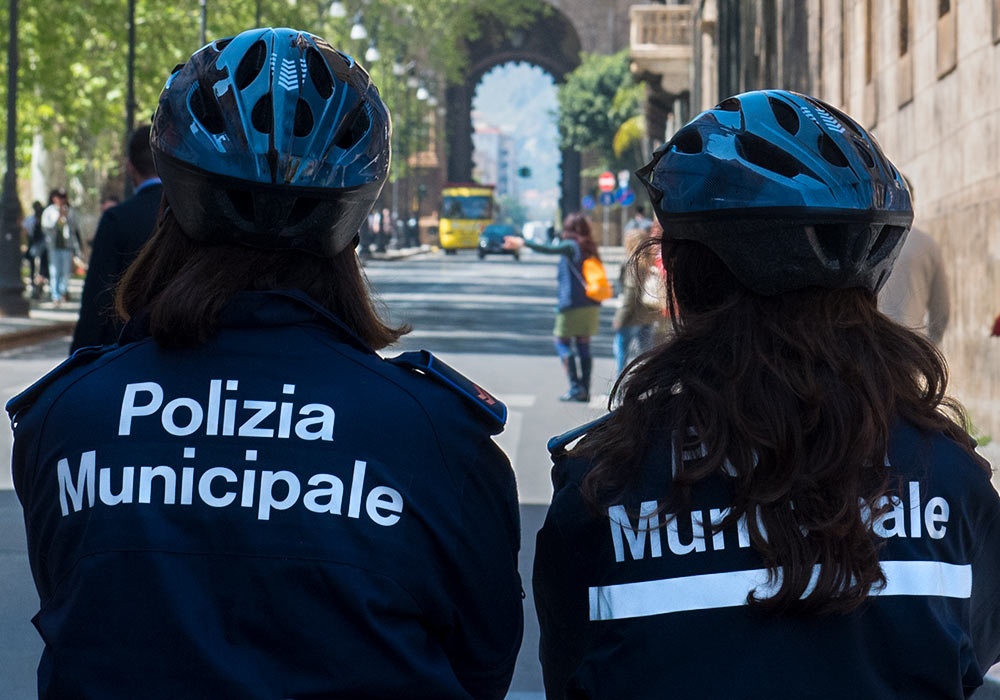
Female police officers during a demonstration near Porta Nuova, Palermo.
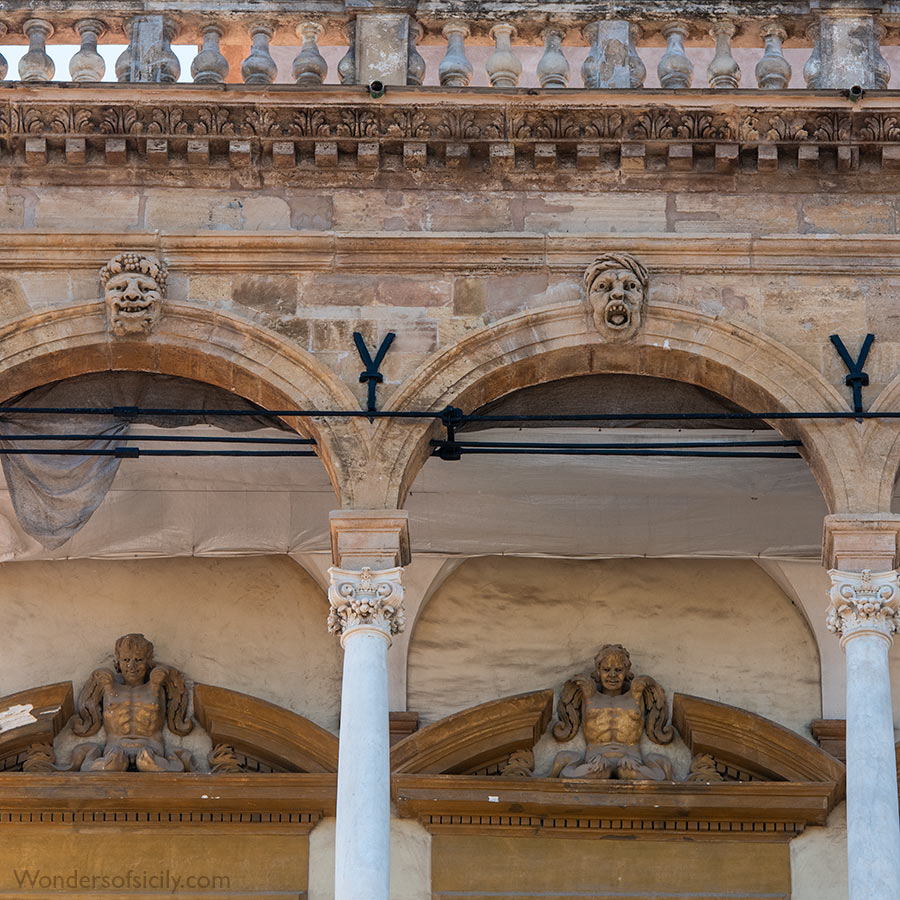
Porta Nuova.
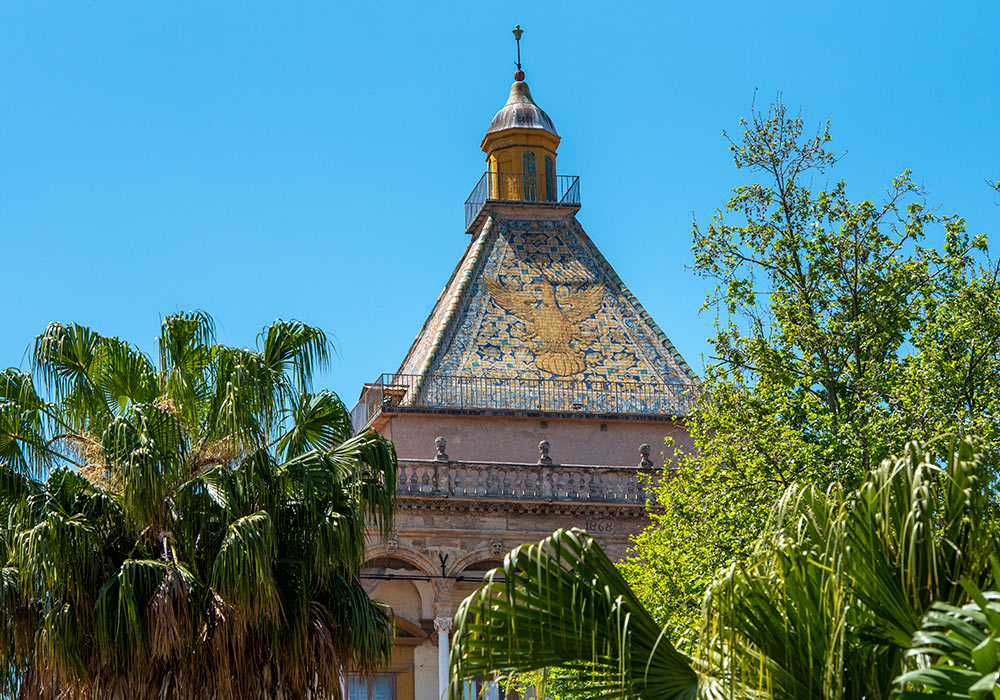
Porta Nuova, one of the city gates of Palermo. It is located near beside the Norman Palace (Palazzo dei Normanni). The original gate was probably built in the 15th century, then built to celebrate Charles V's conquest of Tunis (1535) and his visit to the capital of the Kingdom of Sicily. A fire in 1667 destroyed the gate, but is was rebuilt the following years. Below the majolica eagle on this photo, one can see the year “1668” inscribed.
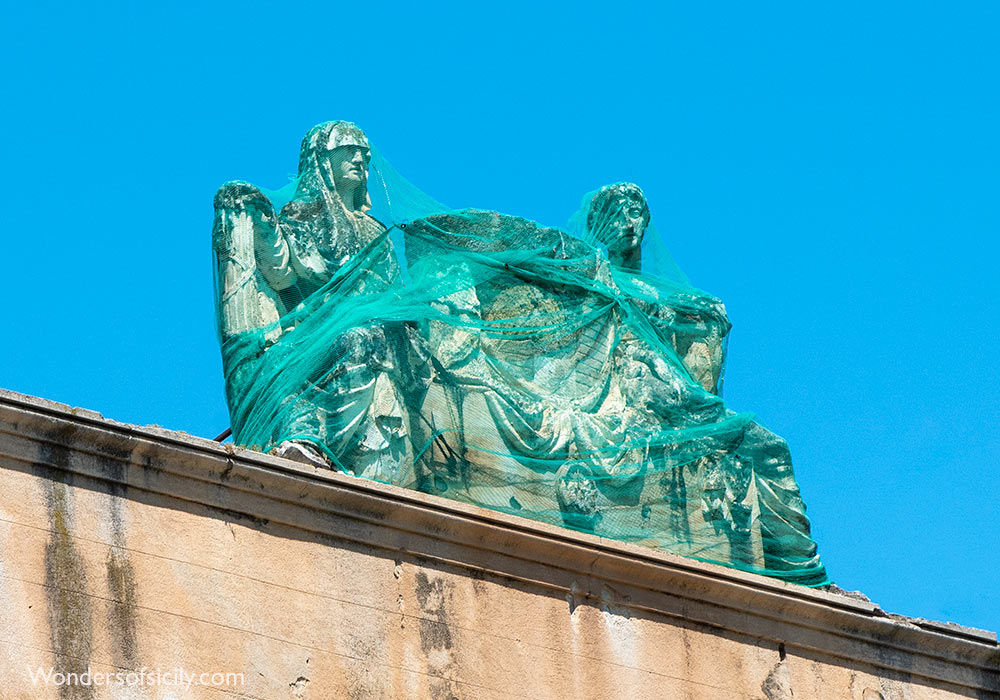
Protecting the past.
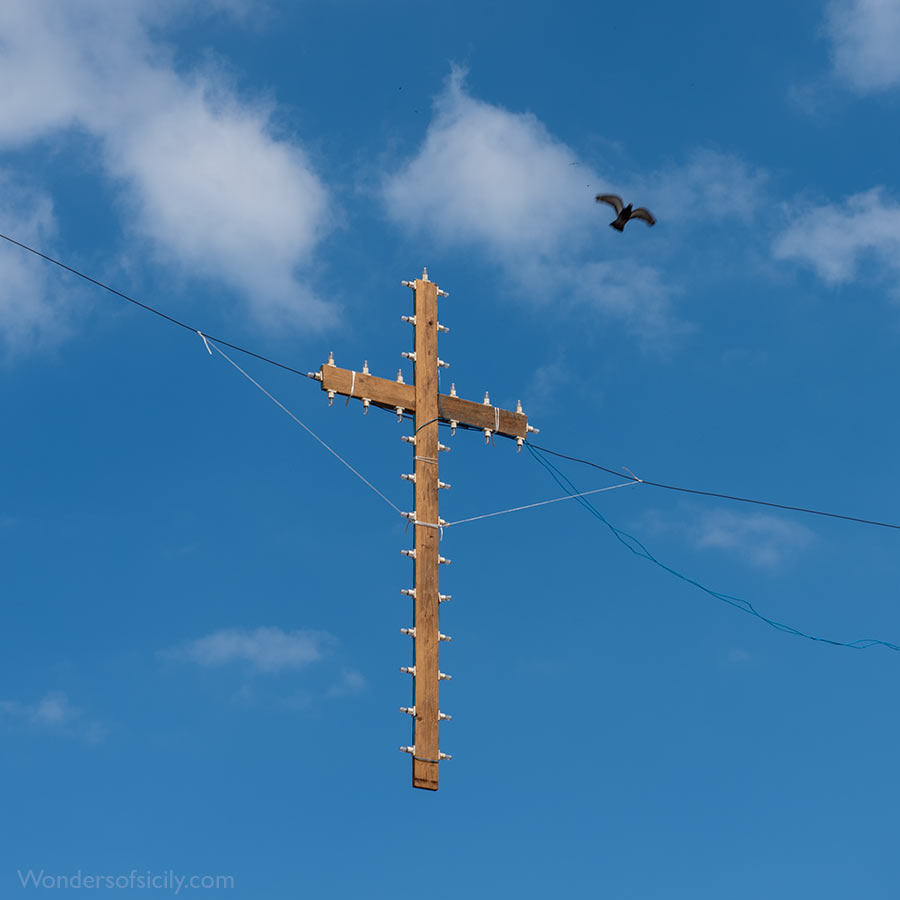
La Favorita (Palermo) - made by SiculDrone
La Magione
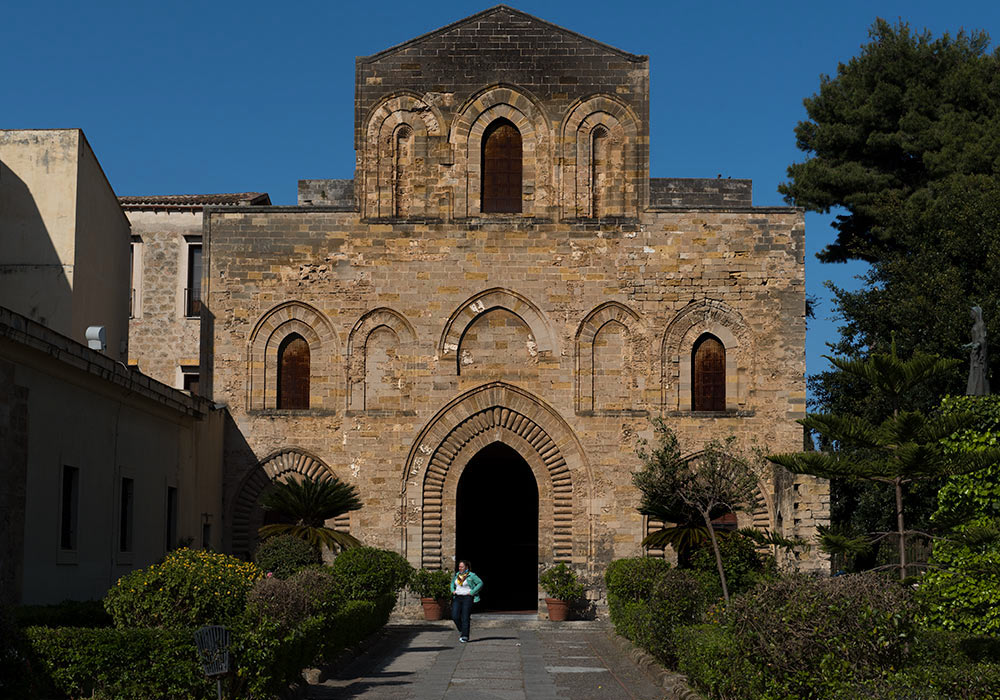
The beautiful facade of the Norman church called La Magione, founded for the Cistercians by Matteo d’Aiello before 1151 as the church of the Trinity, but transferred to the Teutonic knights in 1193 by Emperor Henry VI as their mansion, from which it takes its name. As the church of the Teutonic Knights, it played a rather important role during the Crusades.
Museo Diocesano di Palermo (MuDiPa)
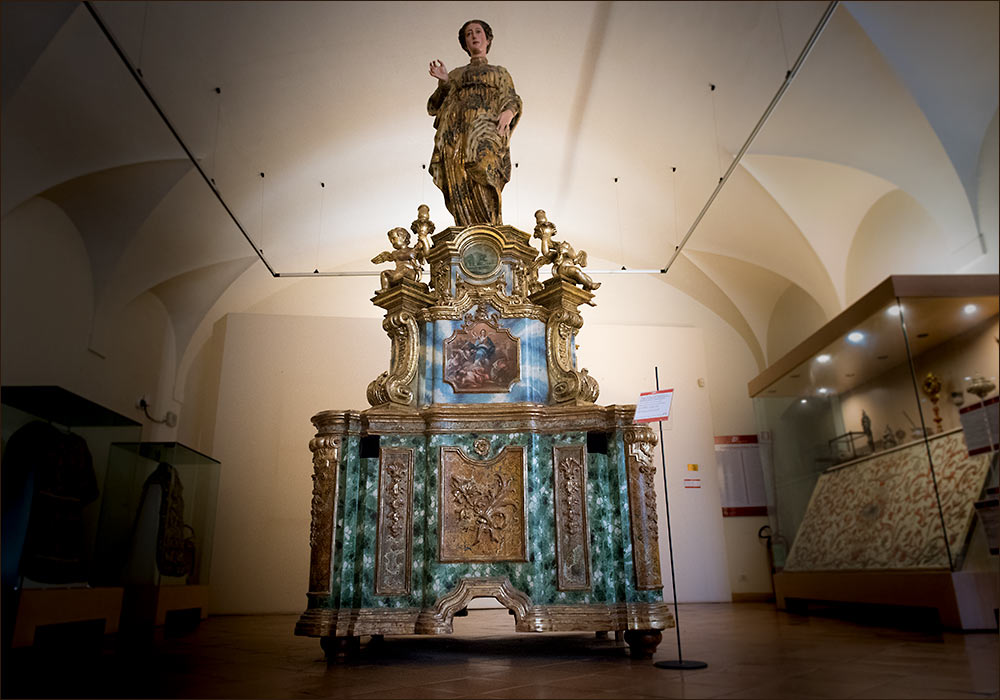
Statue of St. Agatha used for processions. Paolo Amato (born in Cimmina) and an unknown Sicilian painter (c. 1680-1750).
Museo Diocesano di Palermo (MuDiPa)
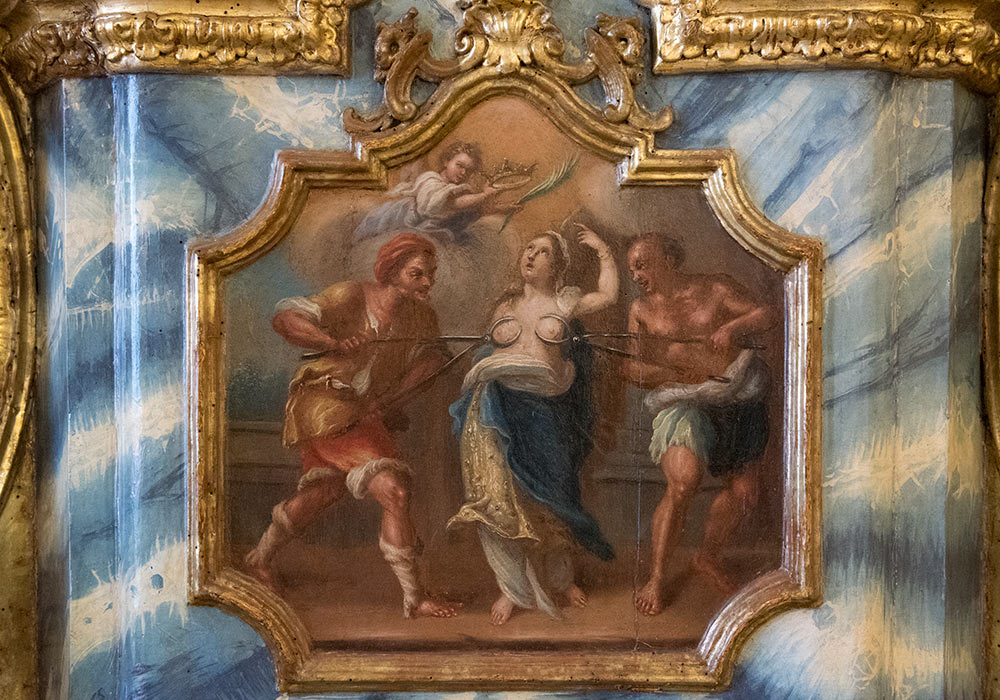
St. Agatha: Detail of the processional cart (Museo Diocesano di Palermo)
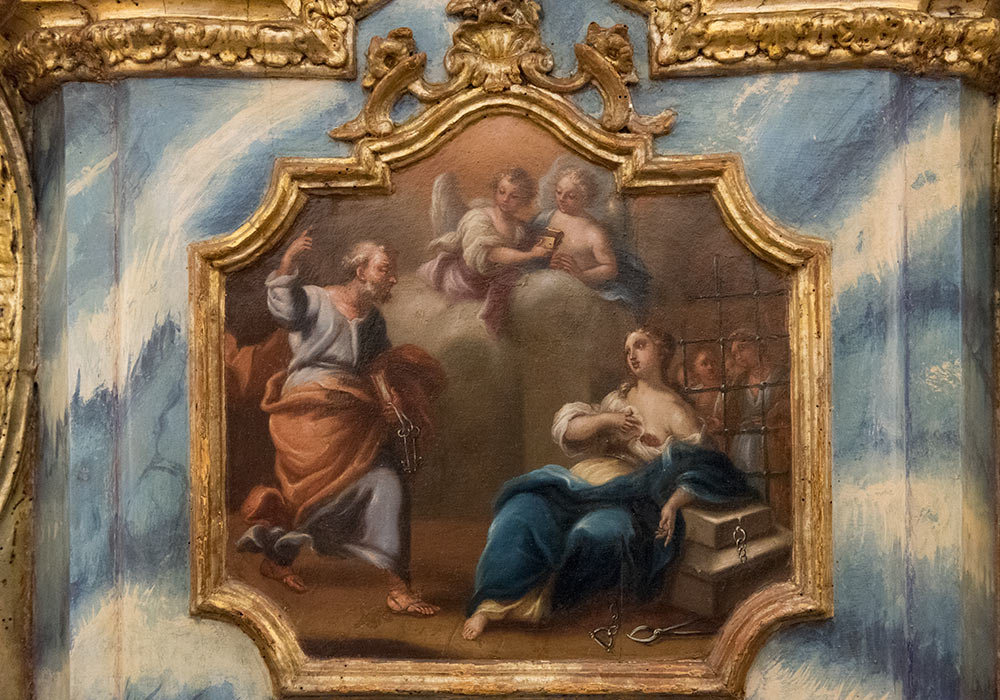
St. Agatha: Detail of the processional cart (Museo Diocesano di Palermo)
Monreale
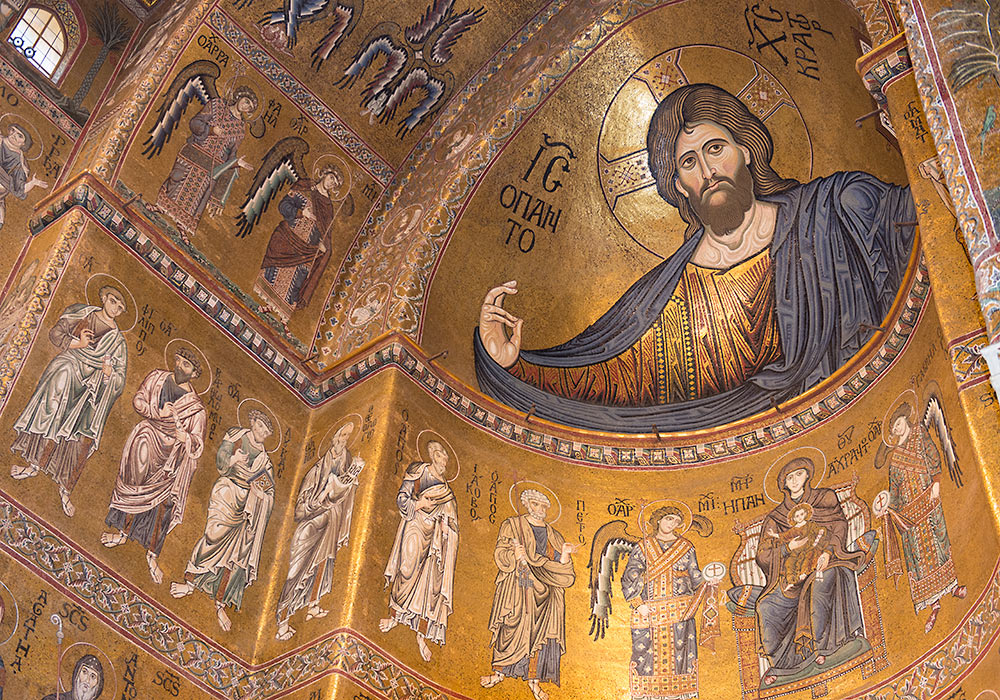
Christ Pantocrator: The cathedral in Monreale, just outside Palermo, is regarded as the most beautiful of the Norman churches in Sicily. The mosaics were made with 2200 kg of pure gold, experts have estimated. Craftsmen from Constantinople were employed to expedite the work. The Byzantine mosaics are among the most magnificent in the world.
The most common translation of Pantocrator is "Almighty" or "All-powerful". In this understanding, Pantokrator is a compound word formed from the Greek words pan (gen. pantos), i.e. "all" and kratos, i.e. "strength", "might", "power". This is often understood in terms of potential power; i.e., ability to do anything, omnipotence. Another, more literal translation is "Ruler of All" or, less literally, "Sustainer of the World". In this understanding, Pantokrator is a compound word formed from the Greek for "all" and the verb meaning "To accomplish something" or "to sustain something". This translation speaks more to God's actual power; i.e., God does everything (as opposed to God can do everything).
More photos from Palermo
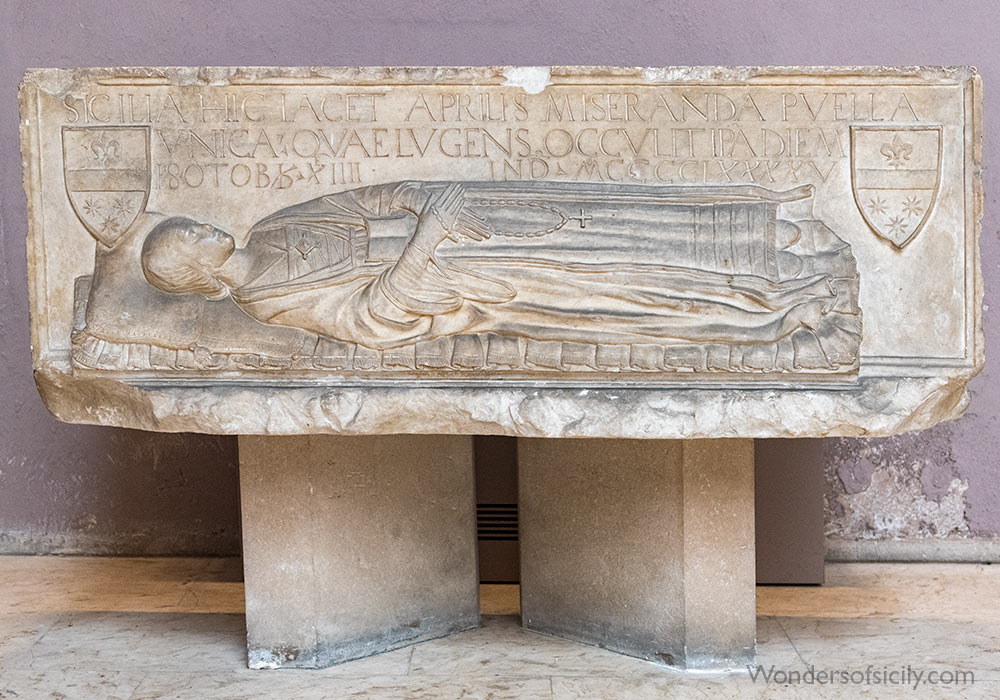
Sarcophagus of Cecilia Aprile (dead 1495), made by the workshop of Francesco Laurana (1430-1502). It was once located in Chiesa di Sant’Agostino, Palermo, now in Galleria Regionale, Palazzo Abatellis.
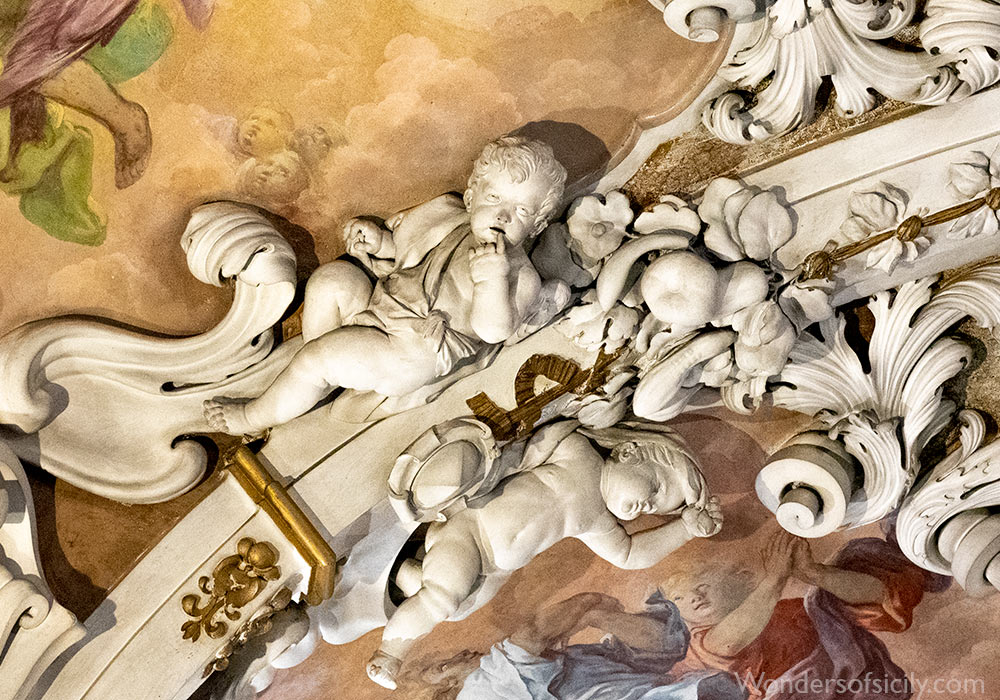
Decorations by Giacomo Serpotta in a building behind the cathedral now used as a school for priests (if I remember correctly). The building is in Via Incoronazione, and is normally closed. It was open for tourists during a school project for children.
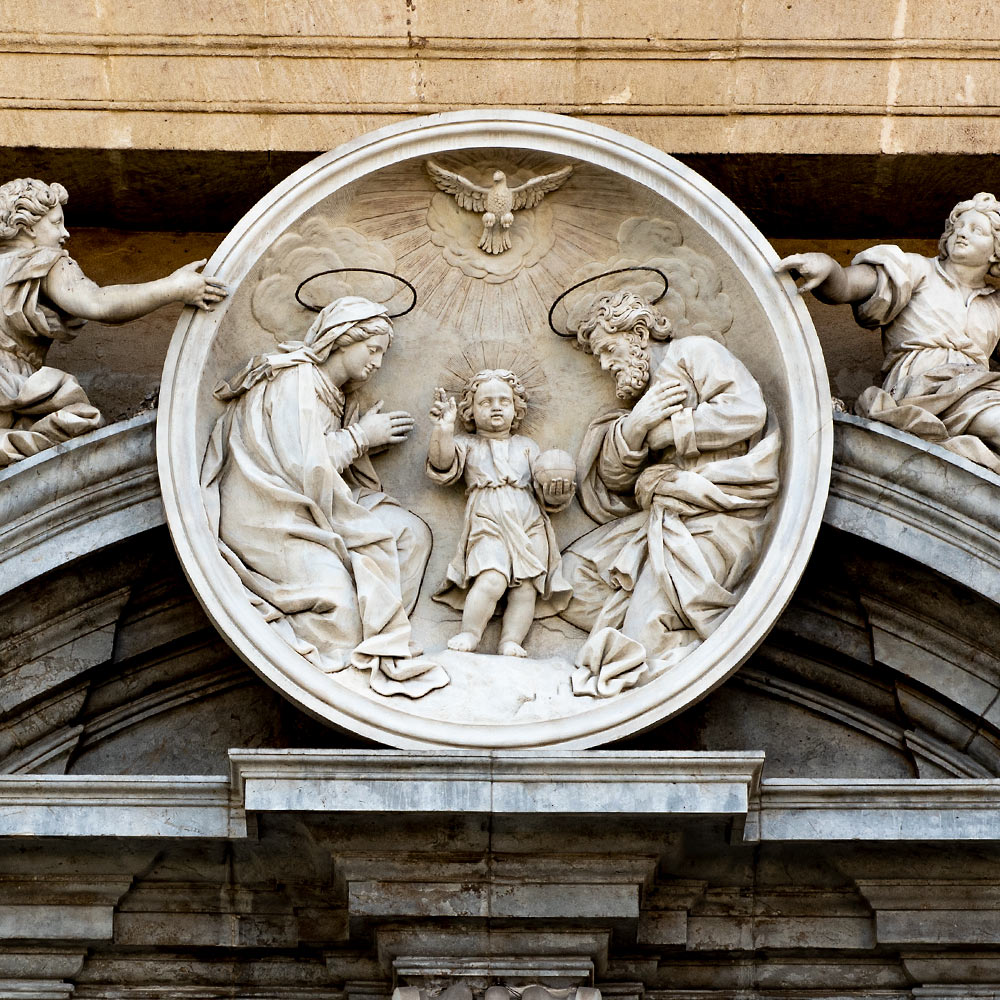
Relief of the holy family (Mary, Jesus and Joseph). Detail of the entrance of the church S. Teresa alla Kalsa (designed by the palermitan architect Giacomo Amato and built between 1686 and 1700).
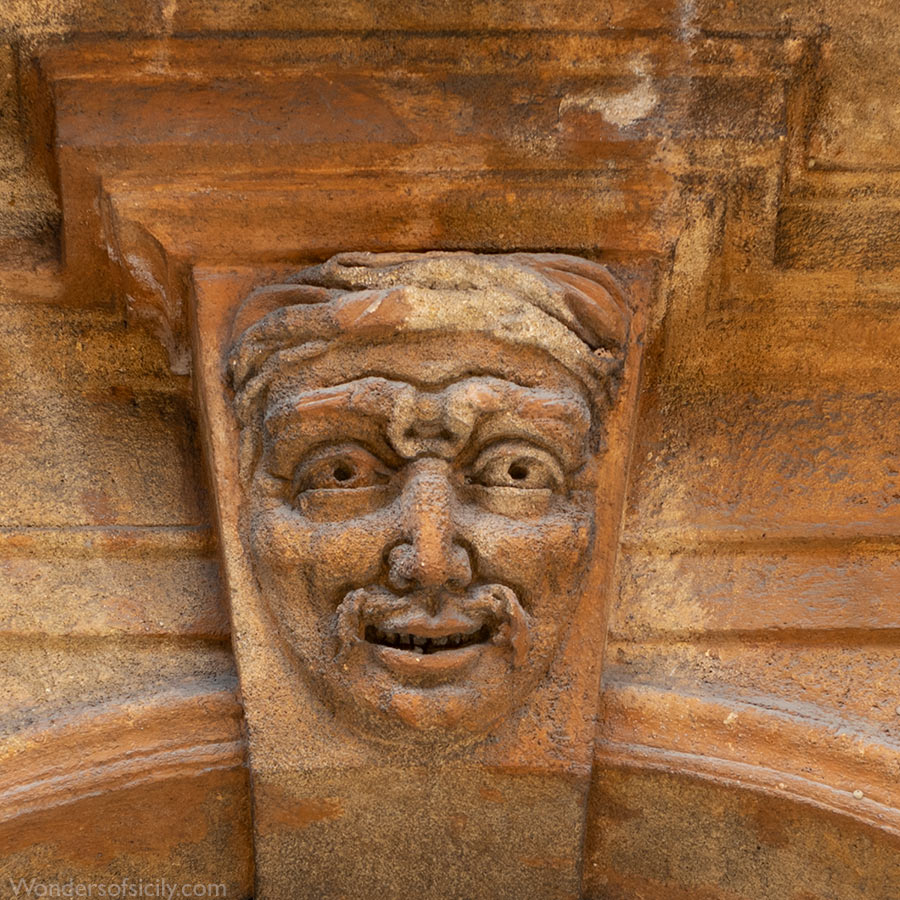
Grotesque face above the entrance on a building in Palermo.
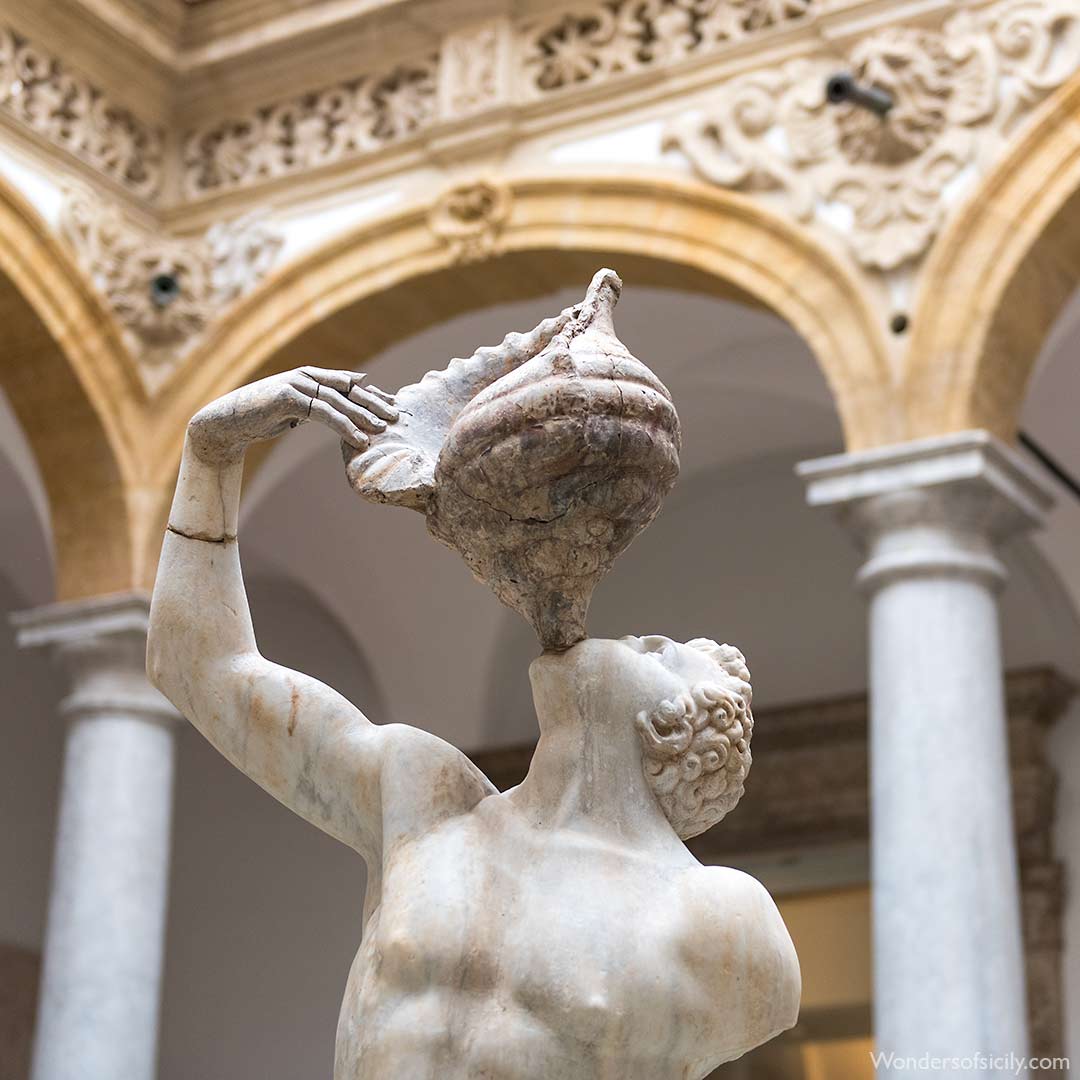
Detail of the fountain in the archeological museum in Palermo.
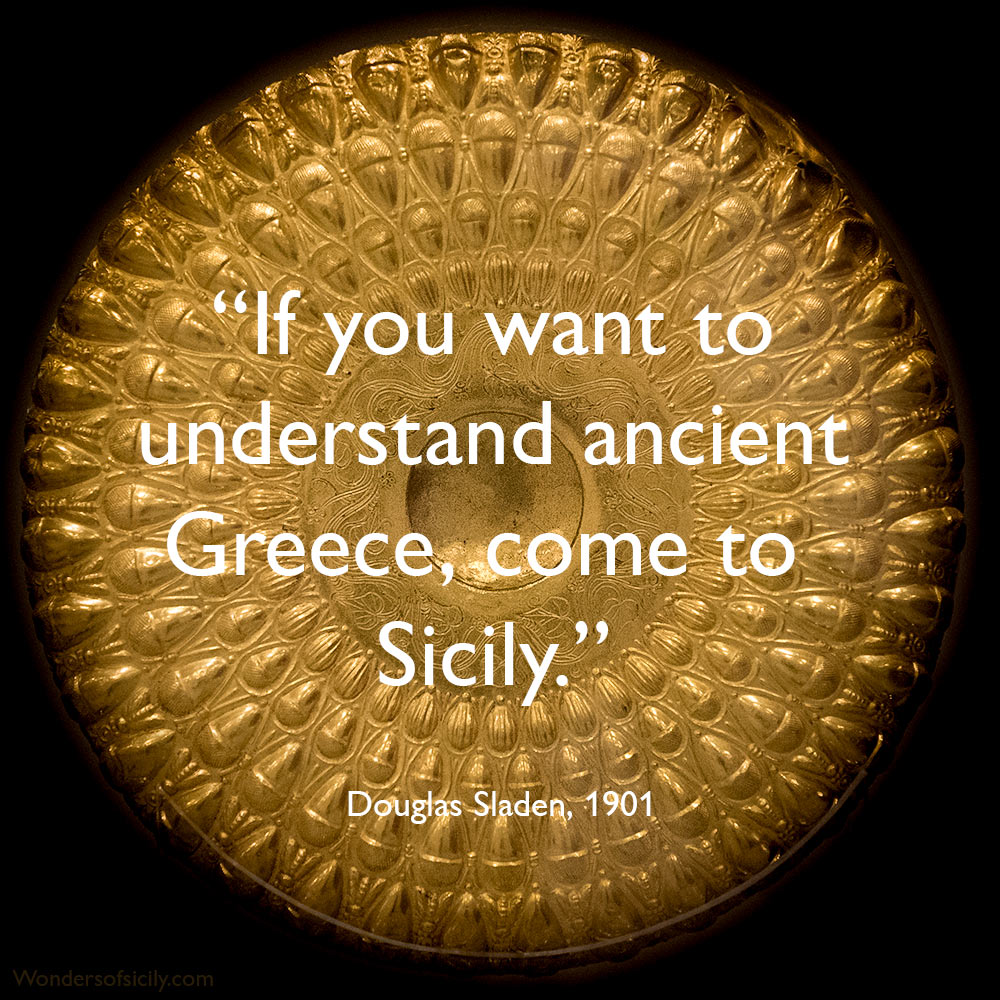
Santa Rosalia, patron saint of Palermo
Churches in Sicily and southern Italy were dedicated to her from the late 13th century, but she is not mentioned in any of the early martyrologies, and her oldest preserved biography dates back to the 16th century. Most of what is known about her comes from local tradition, inscriptions, and artworks.
The Byzantine monastery of San Salvatore in Messina once held a wooden cross, now in Palermo, inscribed with the words: "I, Sister Rosalia Sinibaldi, place this piece of wood of my Lord, whom I have always followed, in this monastery."
Her cult was on the verge of being forgotten when it gained significant prominence in 1624, and she was proclaimed the primary patron saint of Palermo. There appear to be two versions of the events leading to this. One version states that in October 1623, during a plague epidemic, she appeared to a grieving hunter named Vincenzo Bonello, who had lost his wife to the plague and had gone to Monte Pellegrino to end his life. The other version recounts that she appeared to a woman infected with the plague and instructed her to make a pilgrimage to Monte Pellegrino.
In both accounts, people began searching for her bones on Monte Pellegrino, and on July 15, 1624, her supposed remains were discovered in a cave along with a terracotta crucifix, a silver cross, and a rosary. However, there was nothing identifying the bones, and an initial commission of doctors could not even confirm they were human remains. Nevertheless, a second commission of doctors and theologians declared on February 11, 1625, that the remains belonged to Rosalia. They were placed in a reliquary and carried in procession to Palermo Cathedral. Reportedly, the plague in the city ended immediately, having already claimed thousands of lives. Since then, Rosalia has been venerated as a protector against the plague.
In 1626, a church was built over her hermitage on Monte Pellegrino. The cave where her relics were found was expanded into a pilgrimage site and has been heavily visited since the 17th century. Her name was added to the Martyrologium Romanum by Pope Urban VIII (1623–1644). Her feast day is September 4, traditionally believed to be the date of her death, but she is also commemorated on July 15, the date her relics were found.
In Palermo, September 4 continues to be celebrated with a popular festival in her honor. Rosalia is typically depicted as a hermit with flowing hair, a crown of white roses, and penitential chains around her waist. She holds a cross and a skull in her hands.
Maps
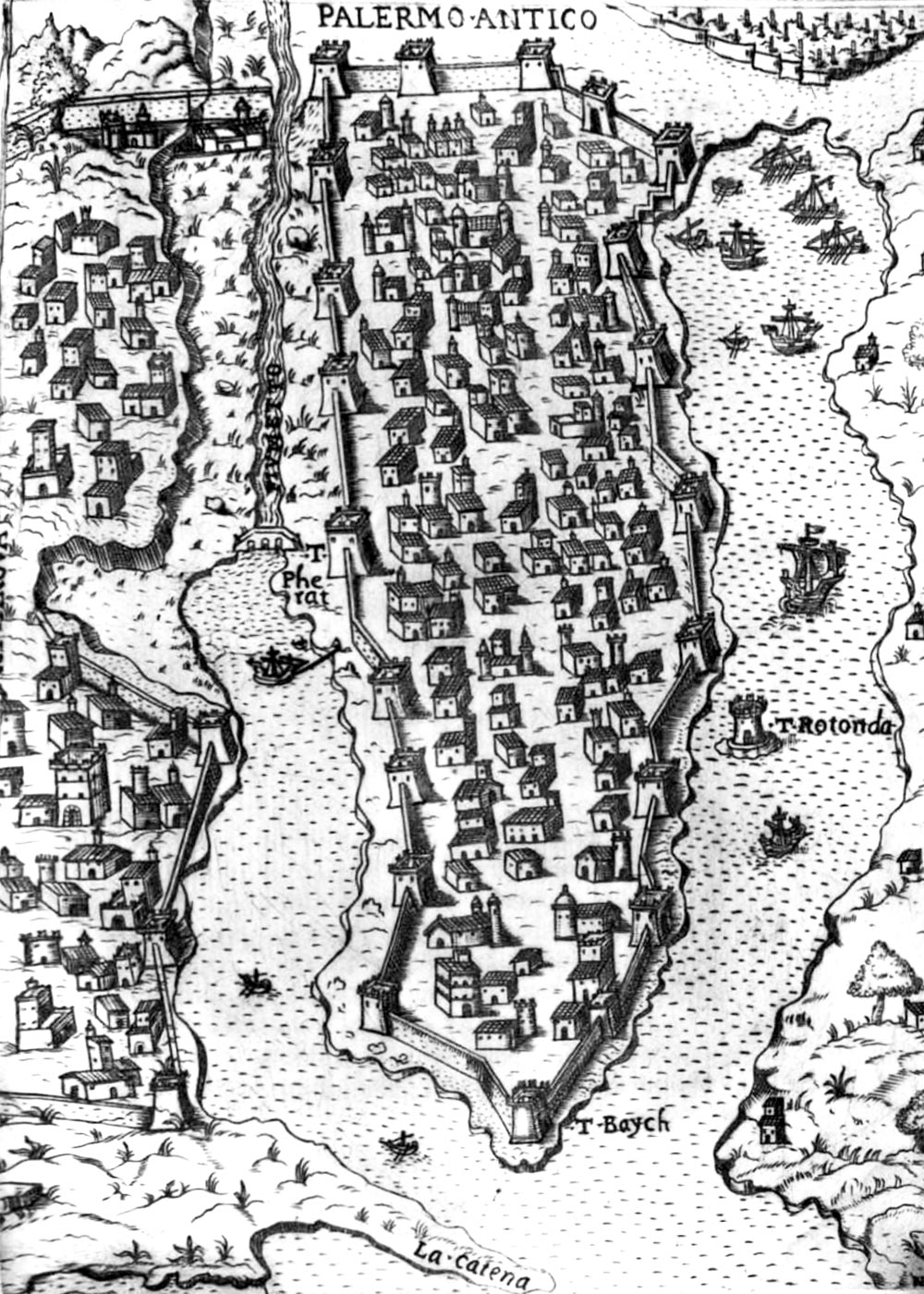
Discorso dell'origine ed antichita di Palermo e de'primi abitatori della Sicilia e dell'Italia (1614). Source: Google Books
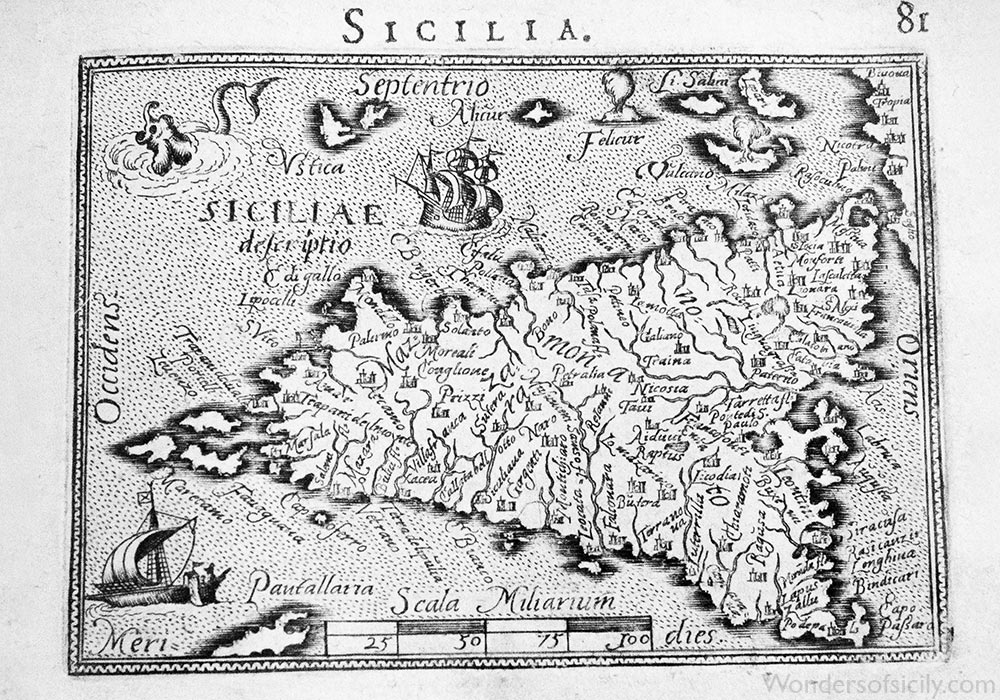
Map of Sicily (1589)
Castello a mare
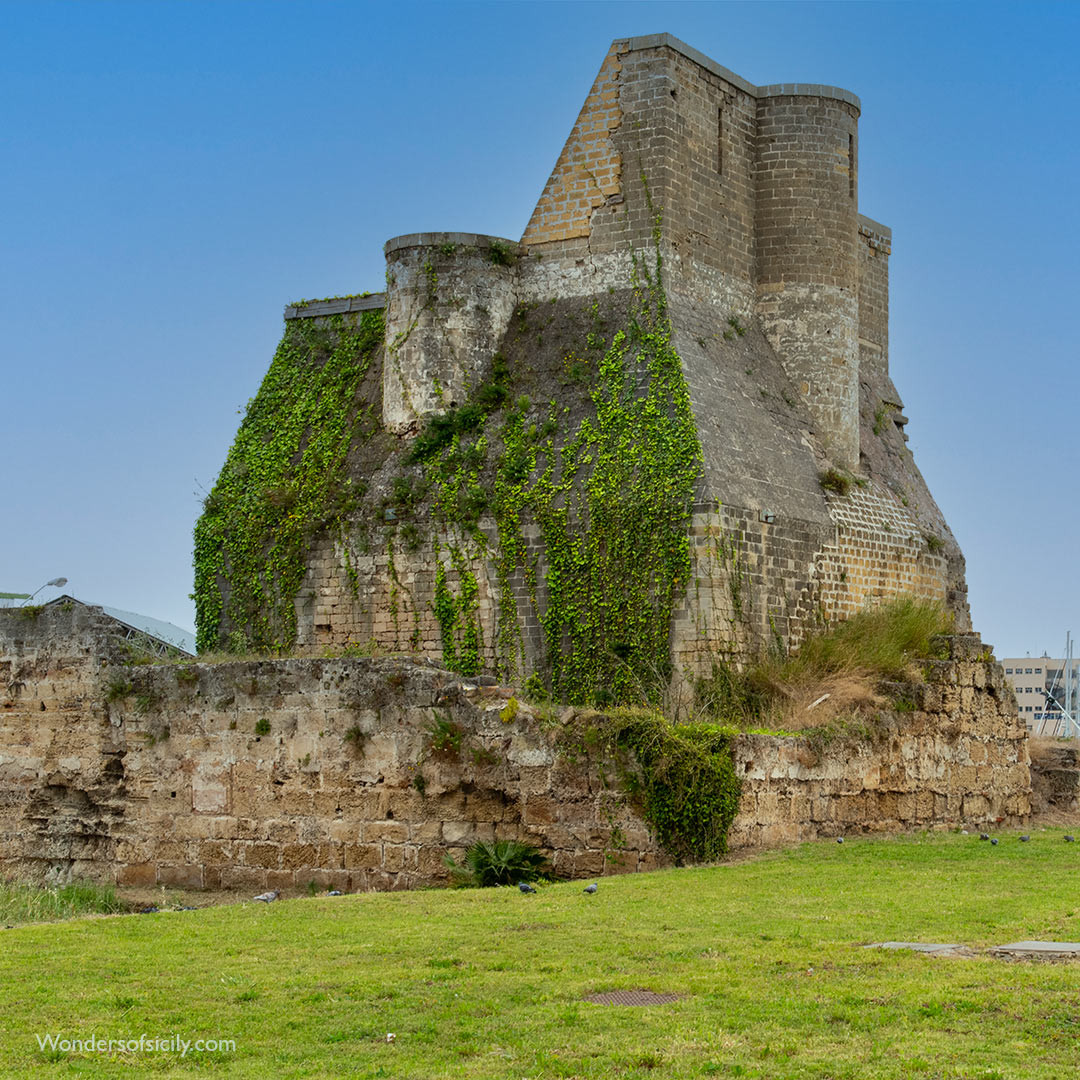
Castello a mare.
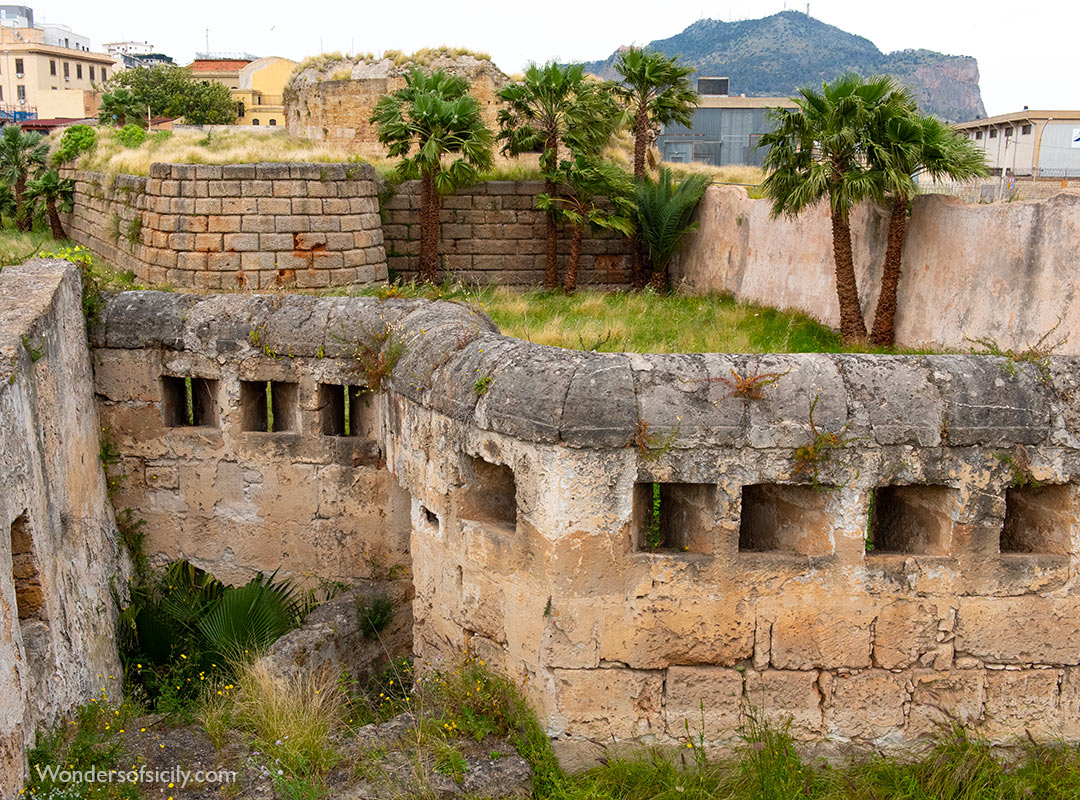
The Castello a Mare is located within the Archaeological Park of Castellammare, near La Cala, in the La Loggia district." It served as the most important defensive stronghold of Palermo's port until the 20th century. The first fortification was built during the Arab period around the 9th century, facing the sea to control and defend the port. It was situated near La Cala, adjacent to the Kalsa district.
The current structure was constructed during the Norman era by Robert Guiscard and the Great Count Roger after their conquest.
Until 1337, it was King Frederick III of Sicily's preferred residence, who personally reformed the prison system housed within the castle. Due to frequent assaults, sabotage, and bombings, early restoration efforts were carried out at the citizens' expense. During the regency of Bianca of Navarre in 1417, a moat was added for security, along with barbicans, bars, and grates for windows, a roof, and improvements to living conditions within the structure.
In 1445, additional defenses were ordered by Alfonso V of Aragon, including storage areas for grain and timber, a chapel, and mills for grinding grain. A 1478 inventory documents weapons and goods within the castle. Further expansions in 1496 were commissioned by Ferdinand II of Aragon to counter increasing attacks by Genoese and Saracen pirate fleets.
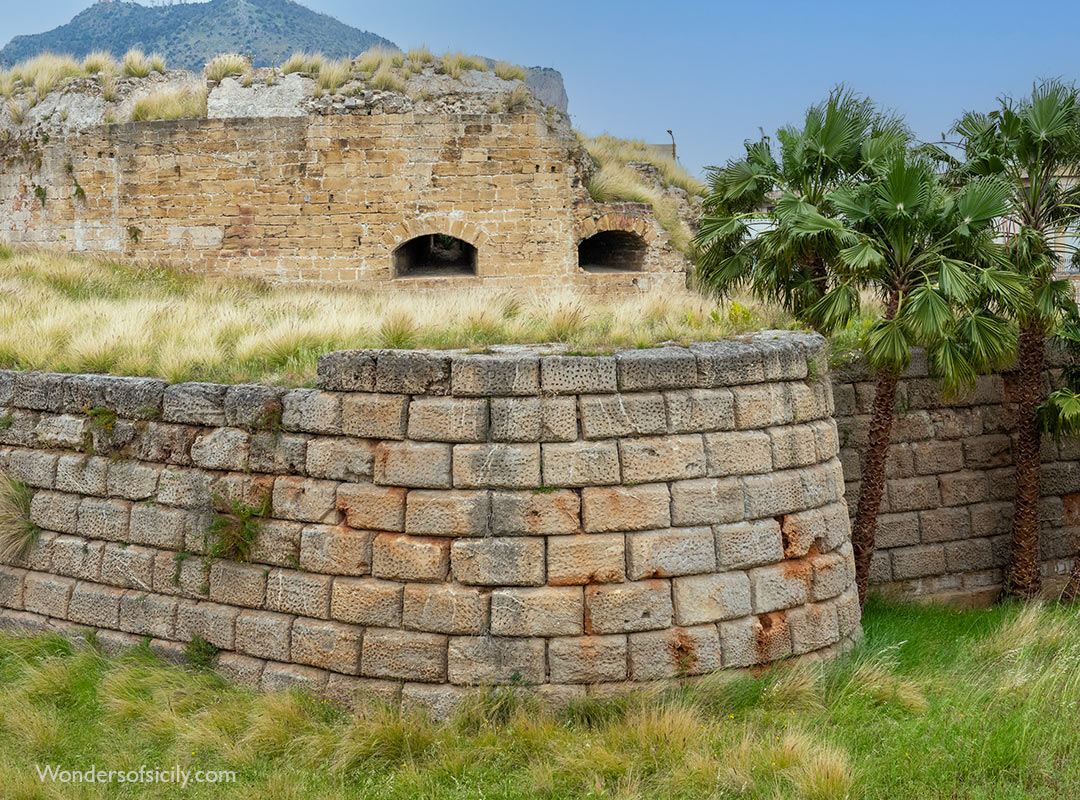
The structures of the Bastion of St. George still astonish today with their extent and grandeur. The bastion occupied the northwestern corner of the fortress and featured the typical spearhead-shaped plan, with its tip pointing northwest. Today, only part of the bastion's western wall and the southern "ear" remain, as the northwest section was cut through by the construction of Via Patti. However, on this front, wall partitions were discovered, built at consistent intervals to support large masses of earth. The bastion was constructed in response to and as a defense against modern artillery, which employed direct fire as opposed to the plunging fire characteristic of war machines until the 15th century. Its design utilized large masses of earth to absorb the impact of enemy projectiles. Furthermore, the use of inclined surfaces reduced the impact effect of the projectiles and facilitated their ricochet at the same angle of incidence.
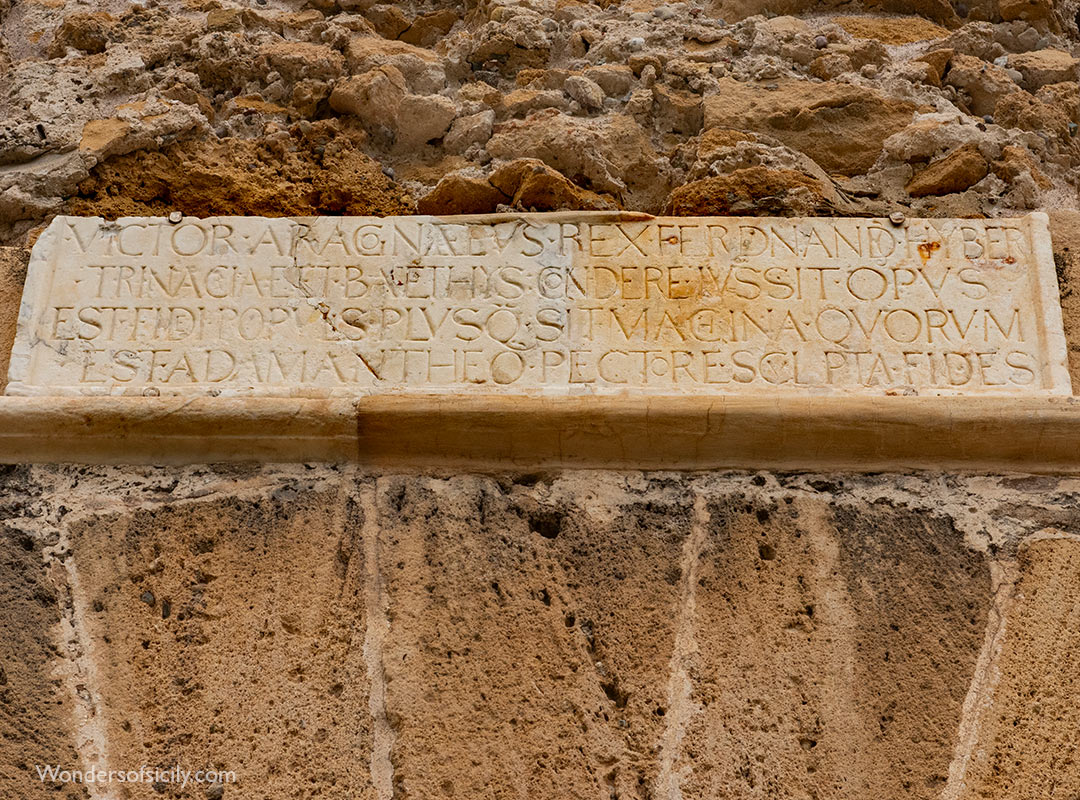
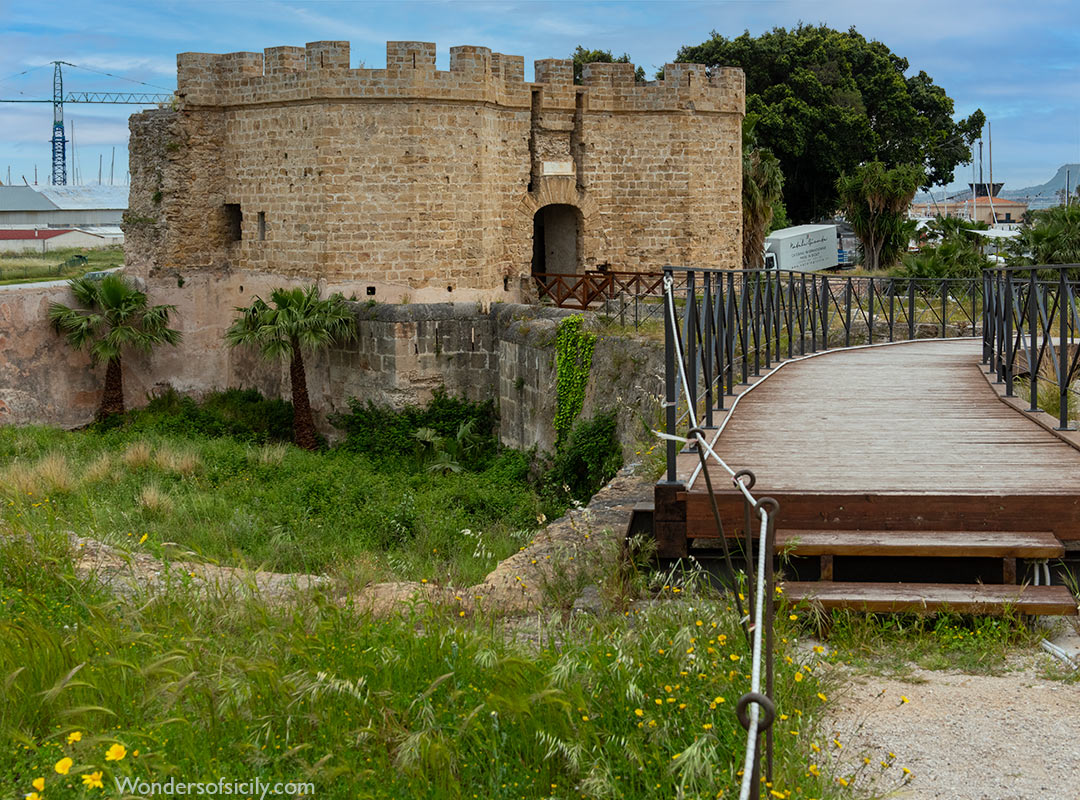
The presence of an Islamic necropolis (cemetery) in this place indicates that when the city was governed by the Arabs, before they built the tower that we call the "Arab-Norman keep", this area was outside the city, because the Muslims also buried their dead outside the inhabited area.

